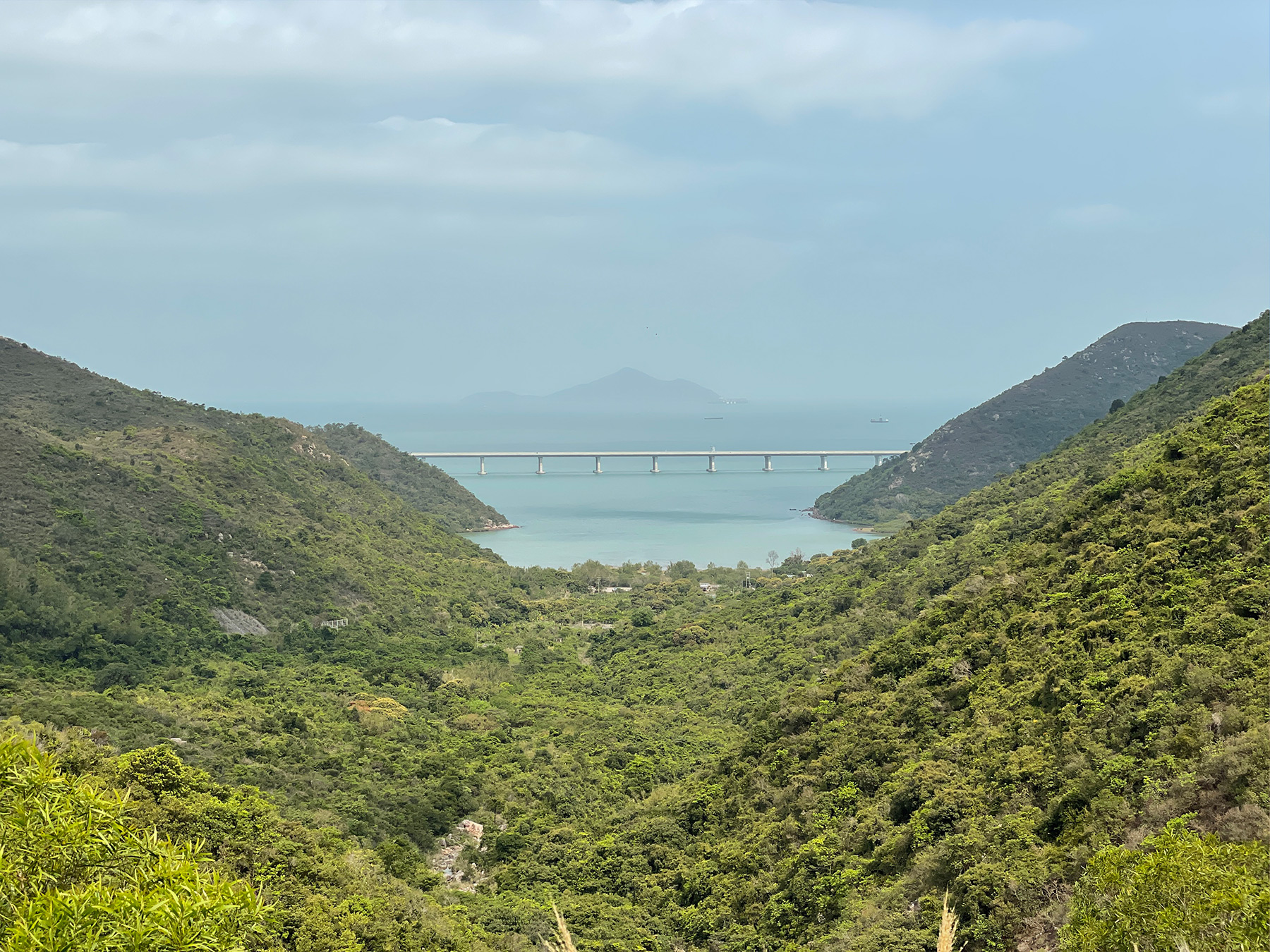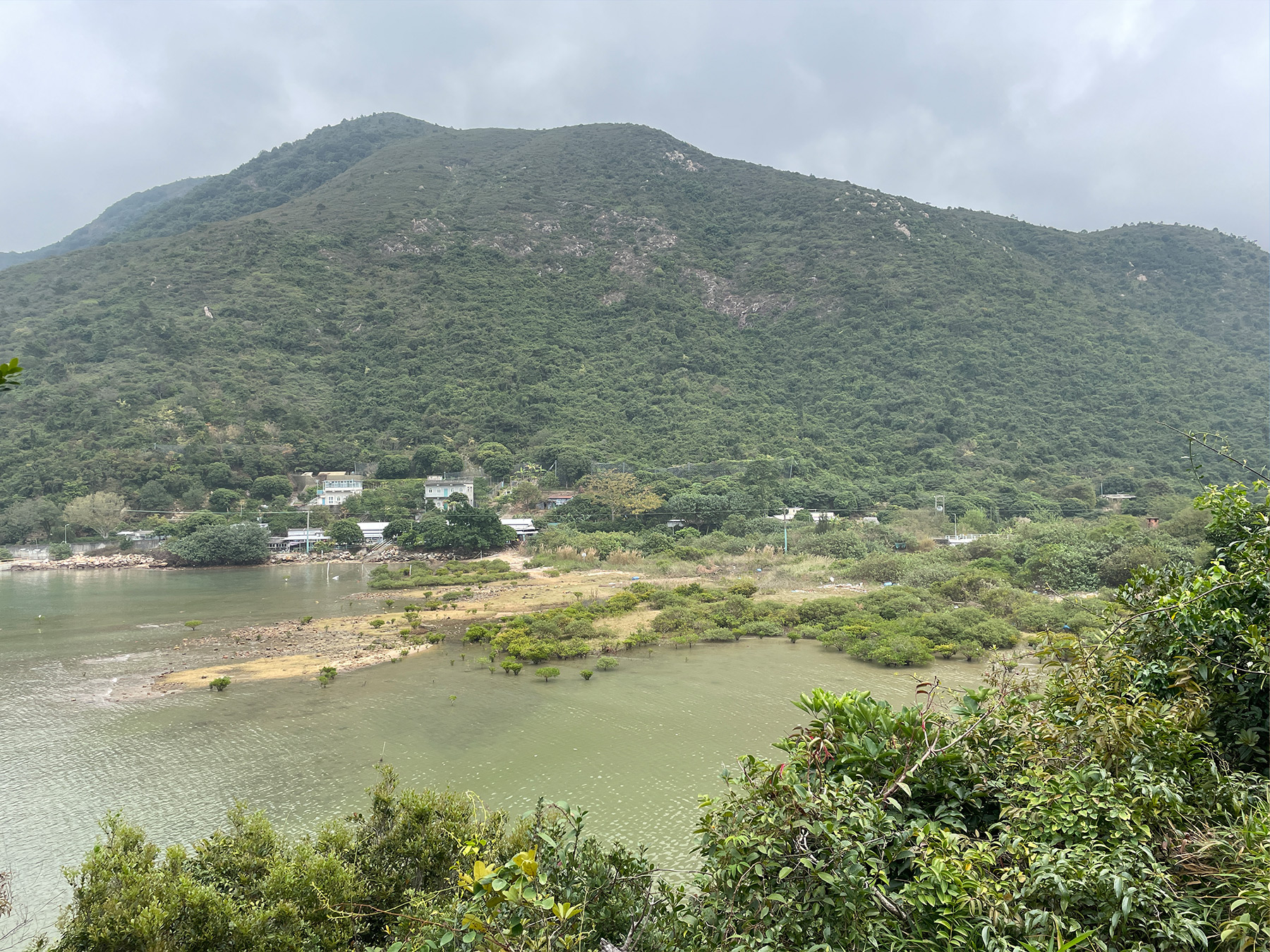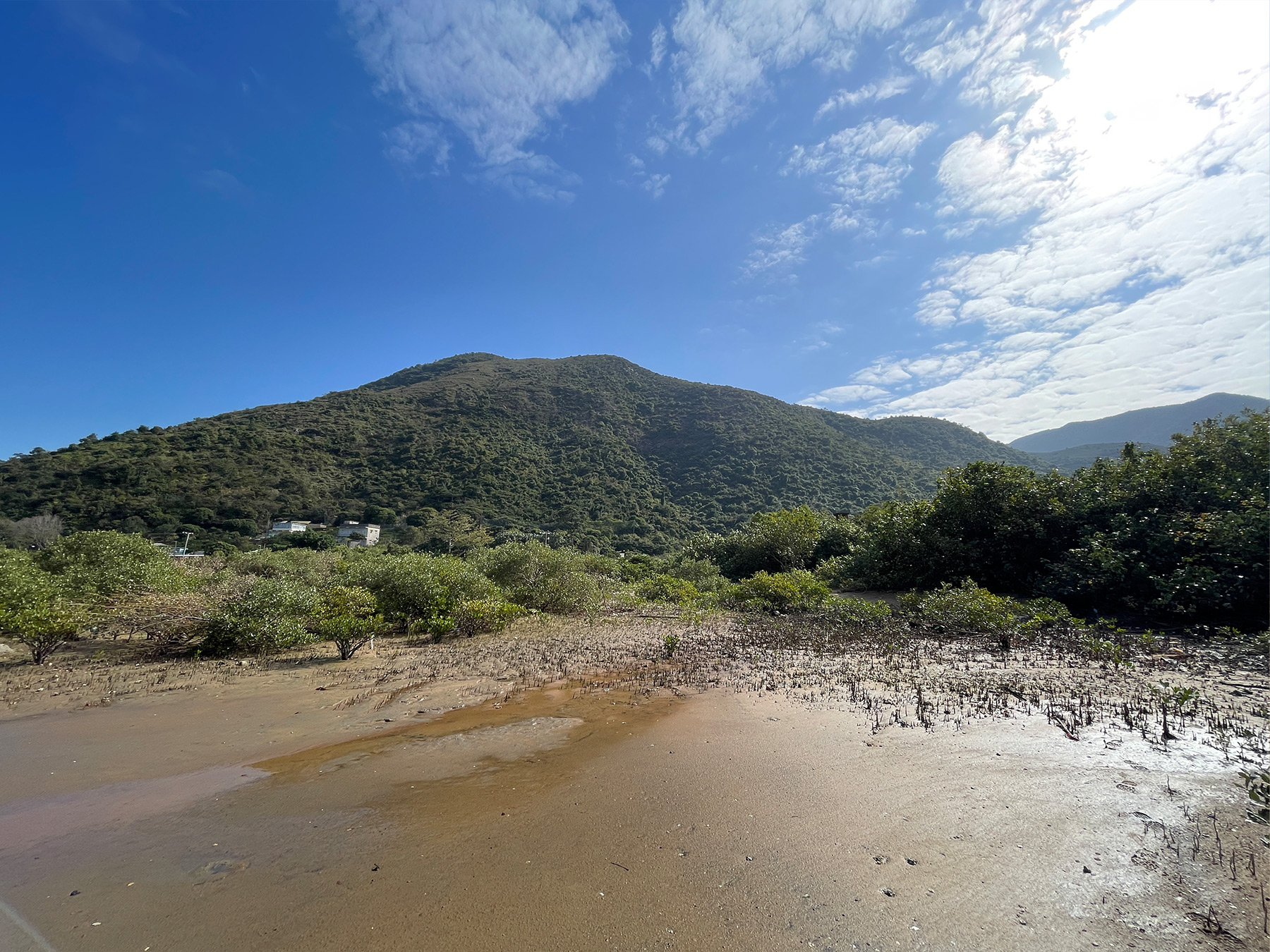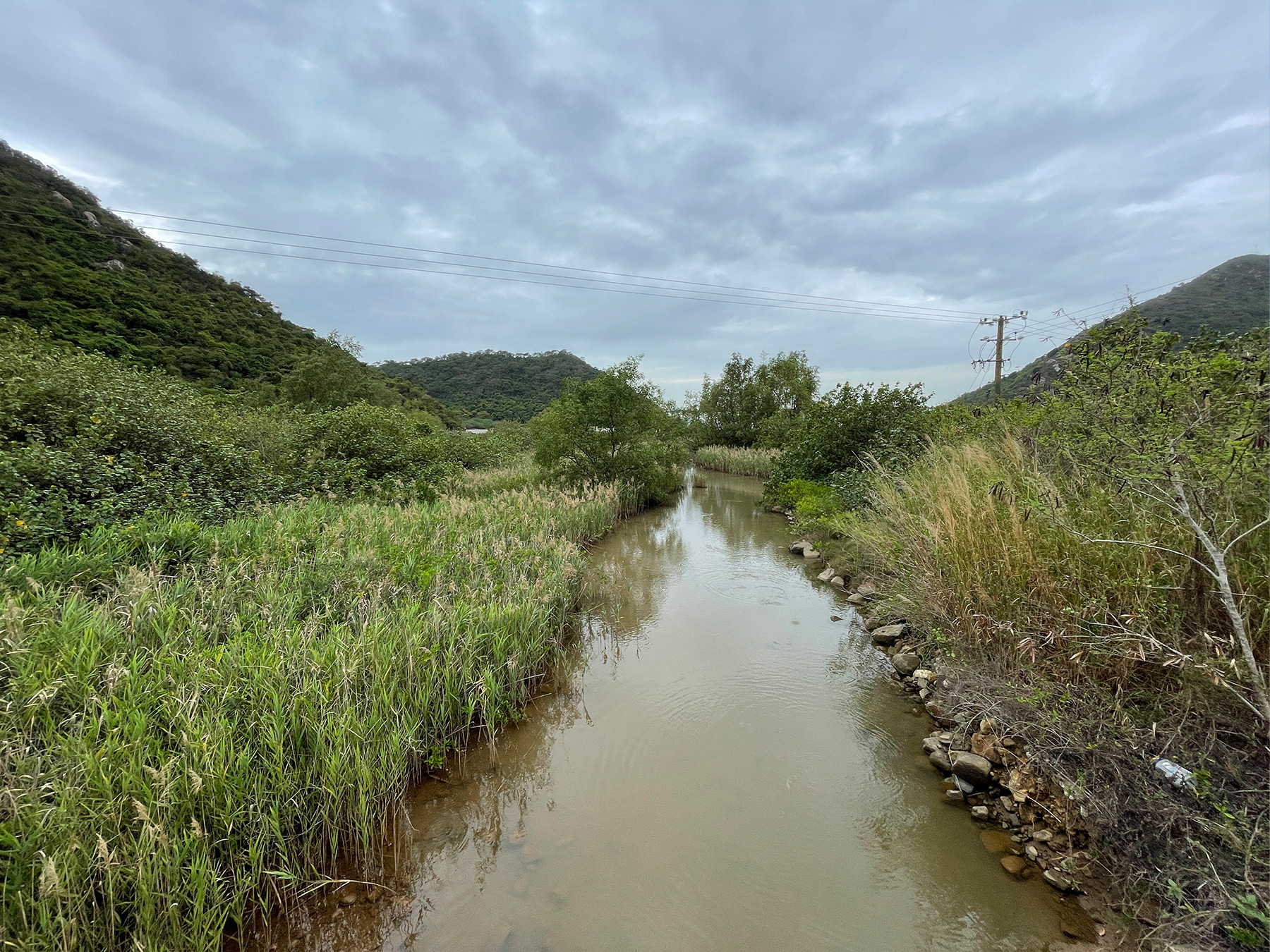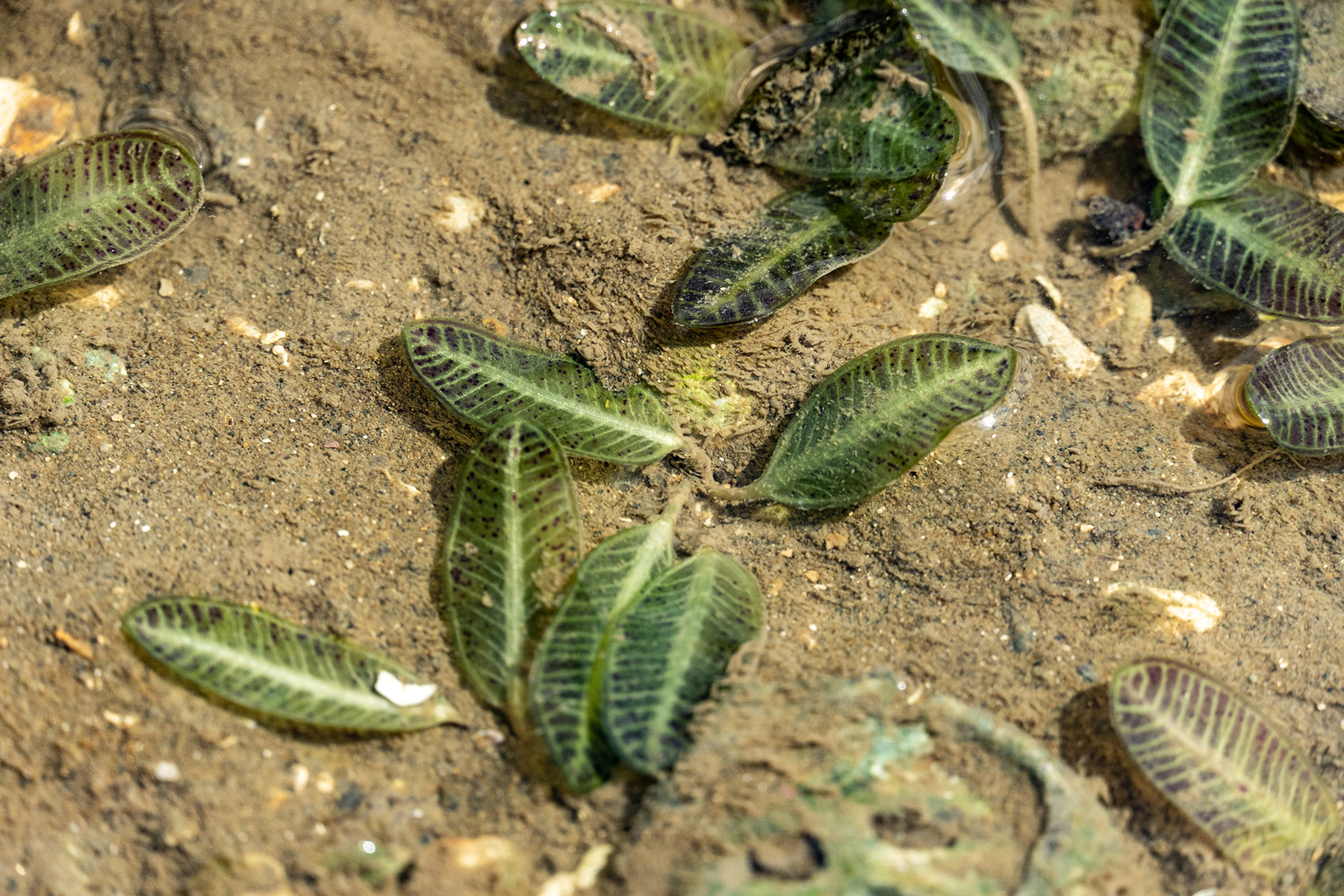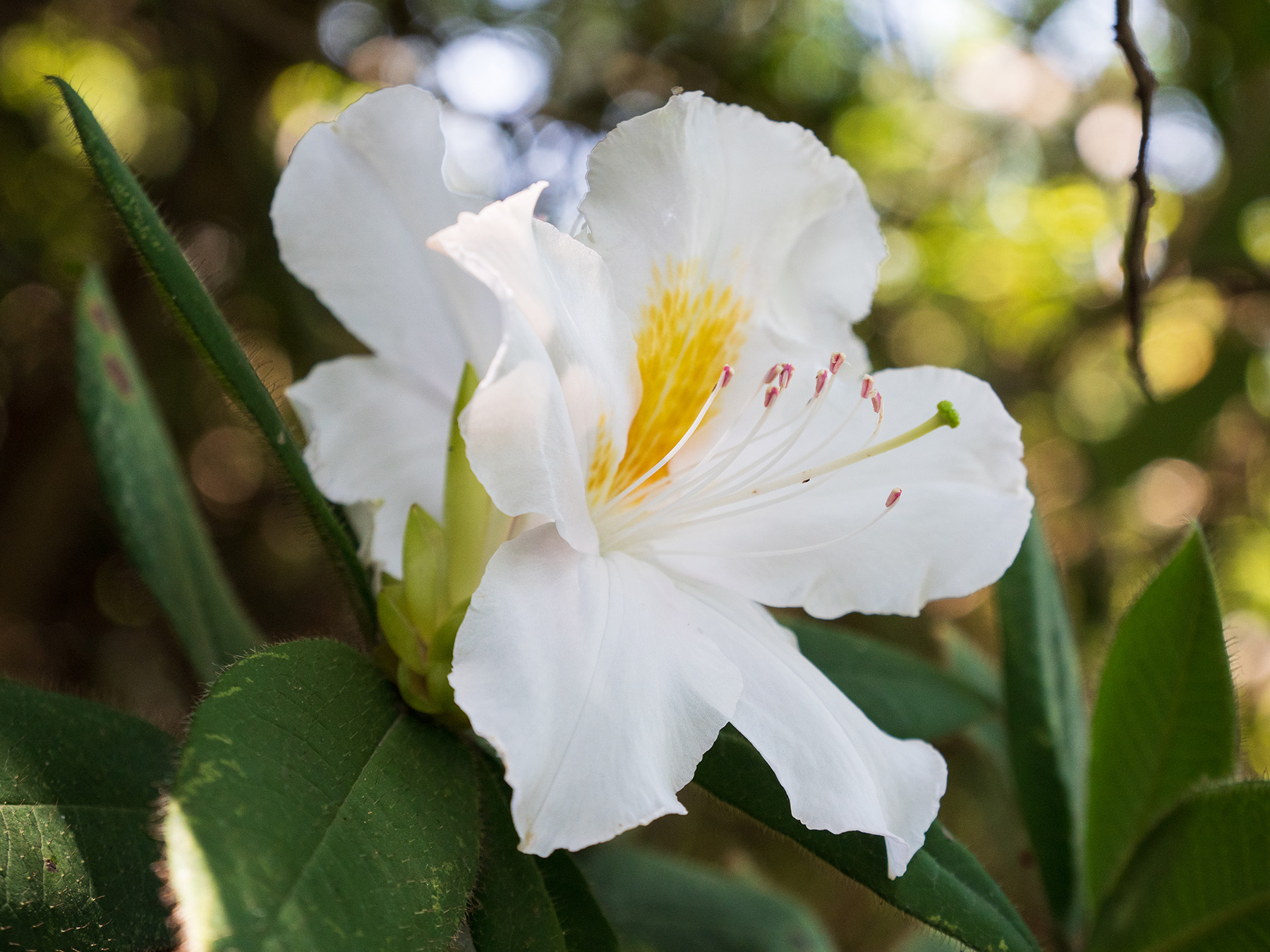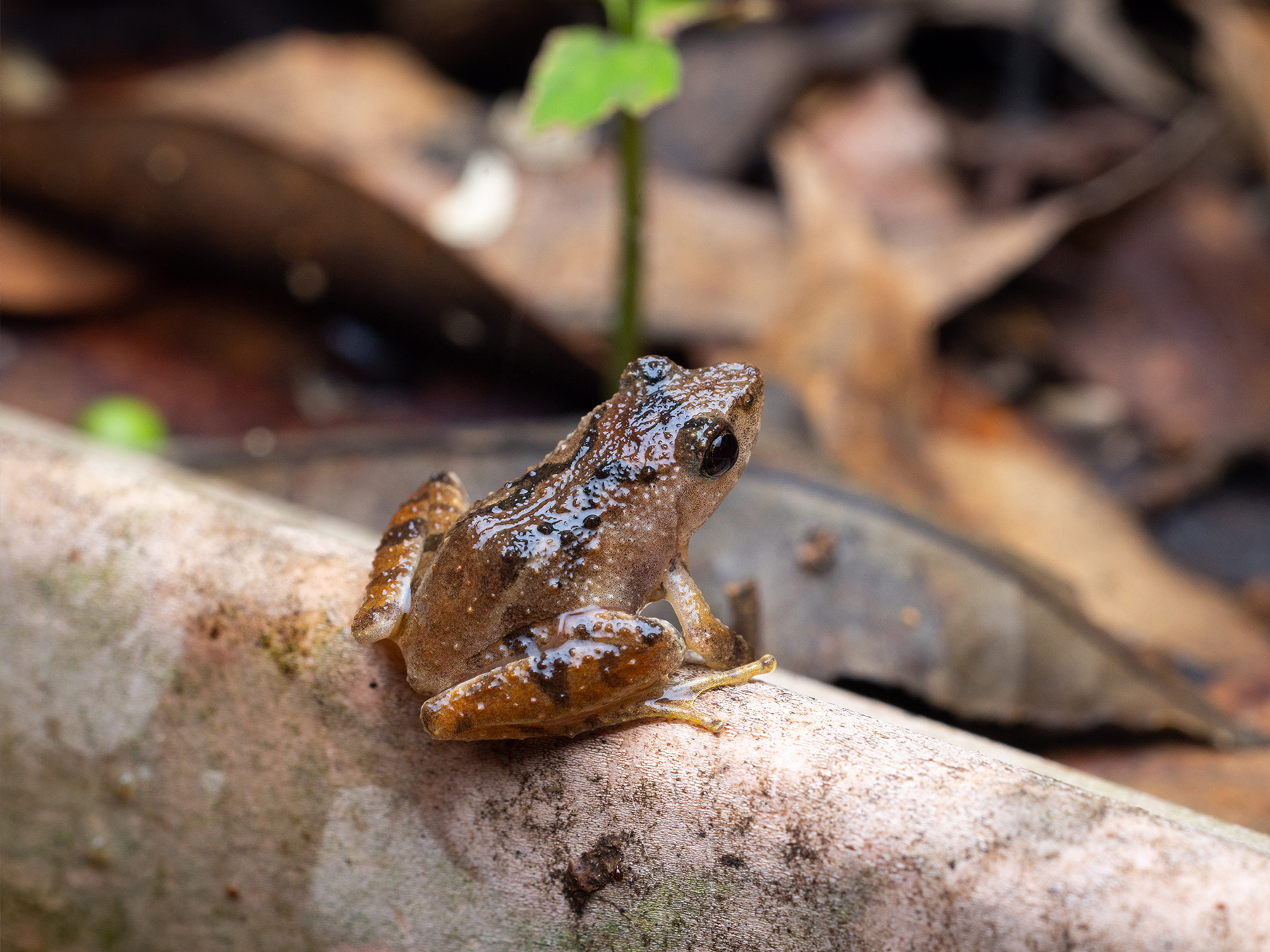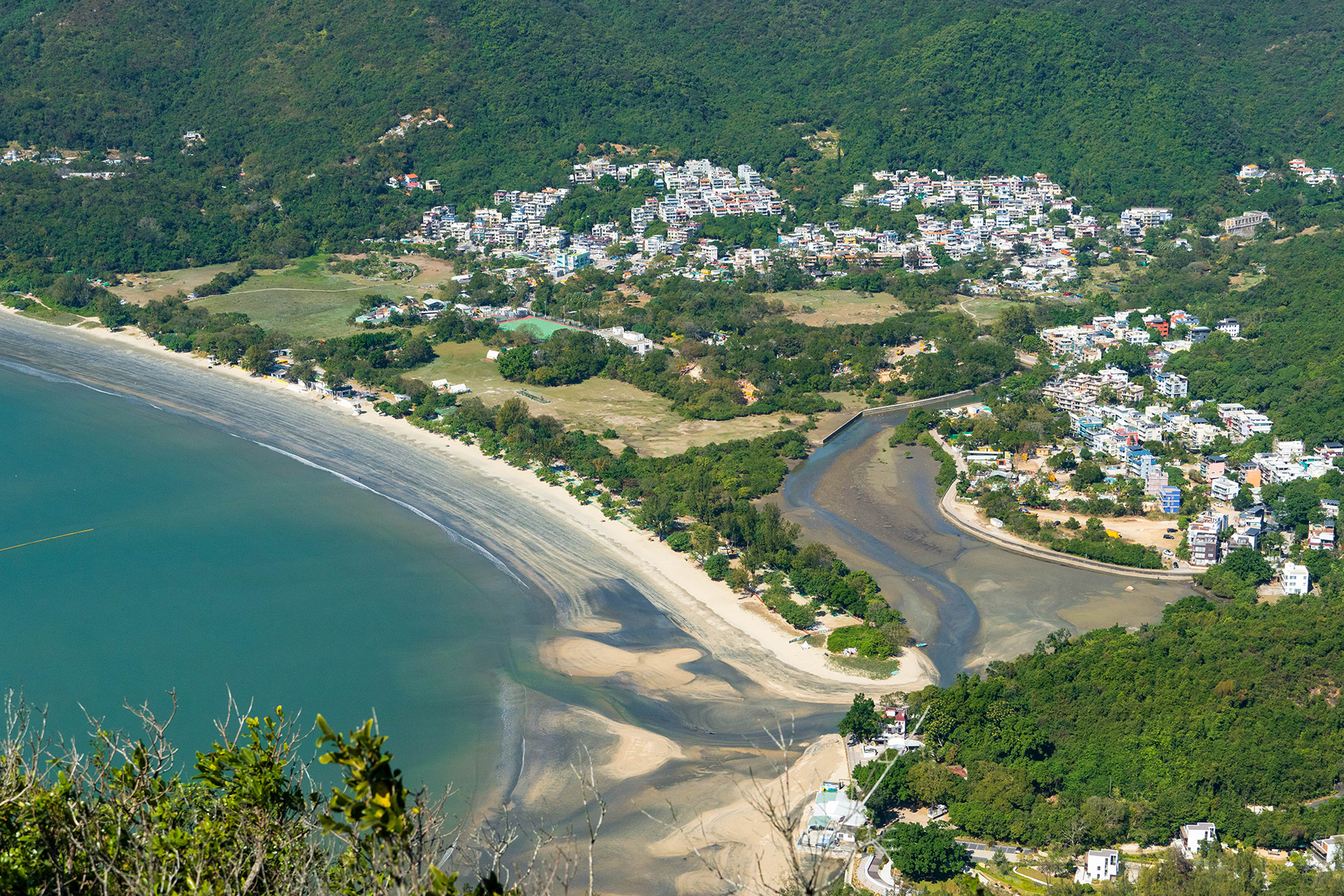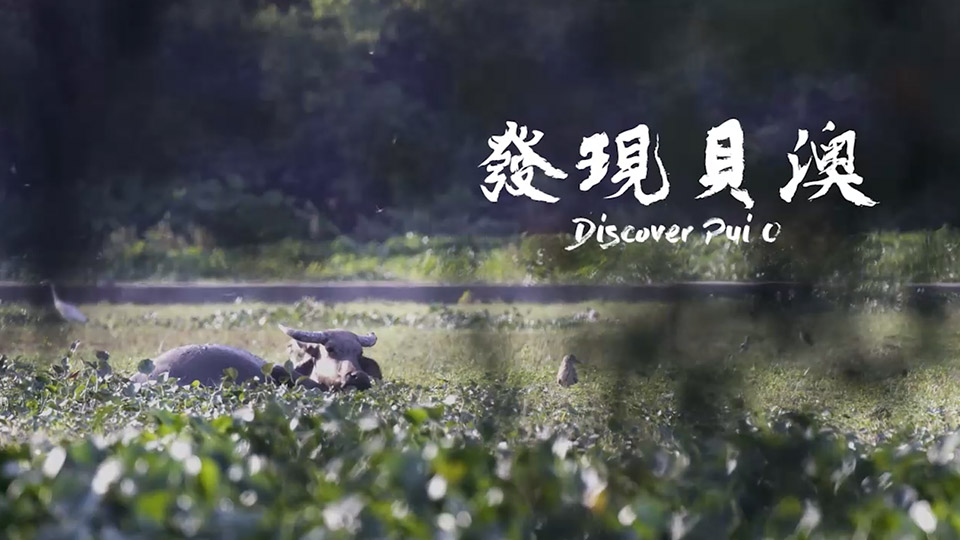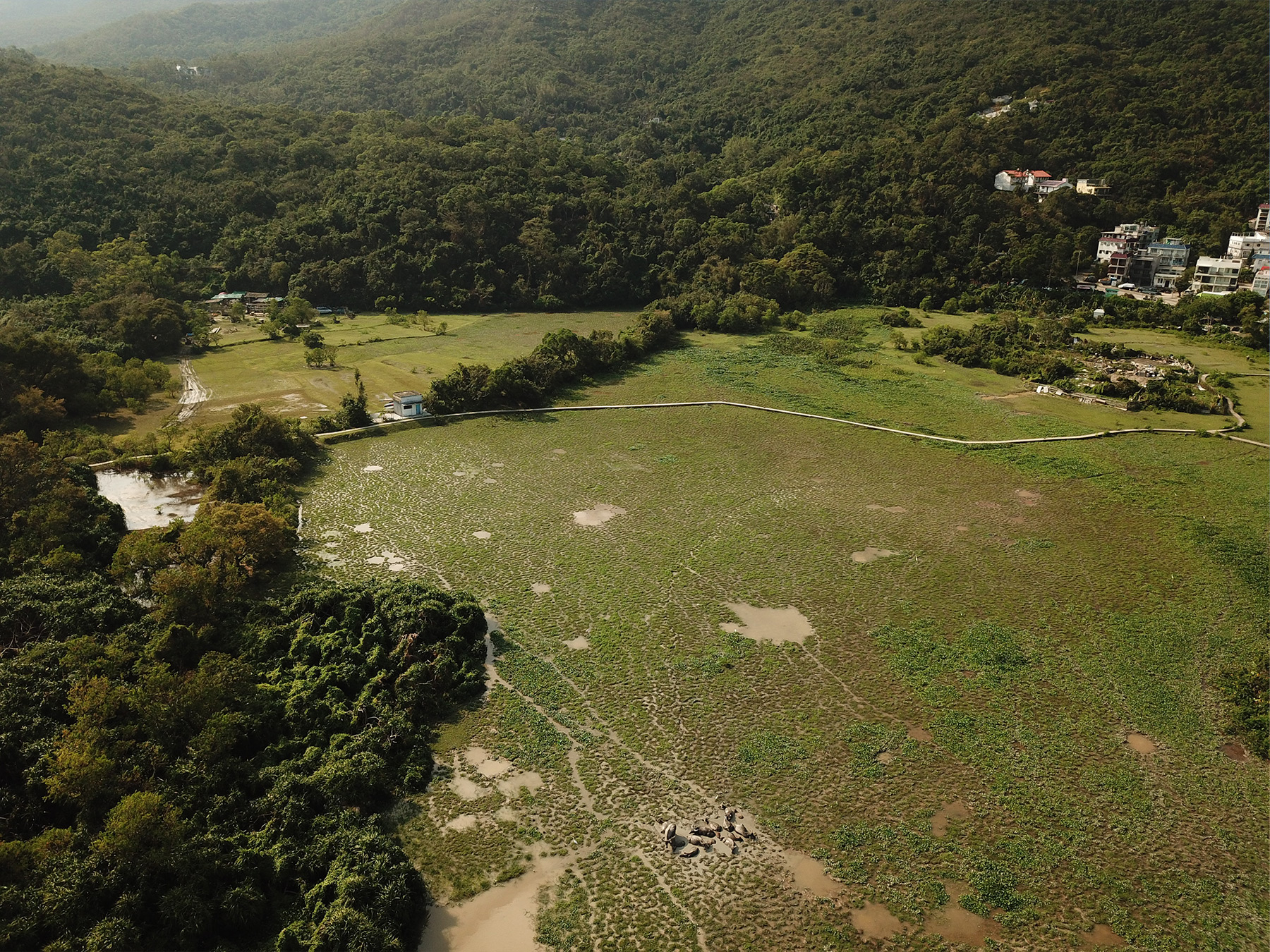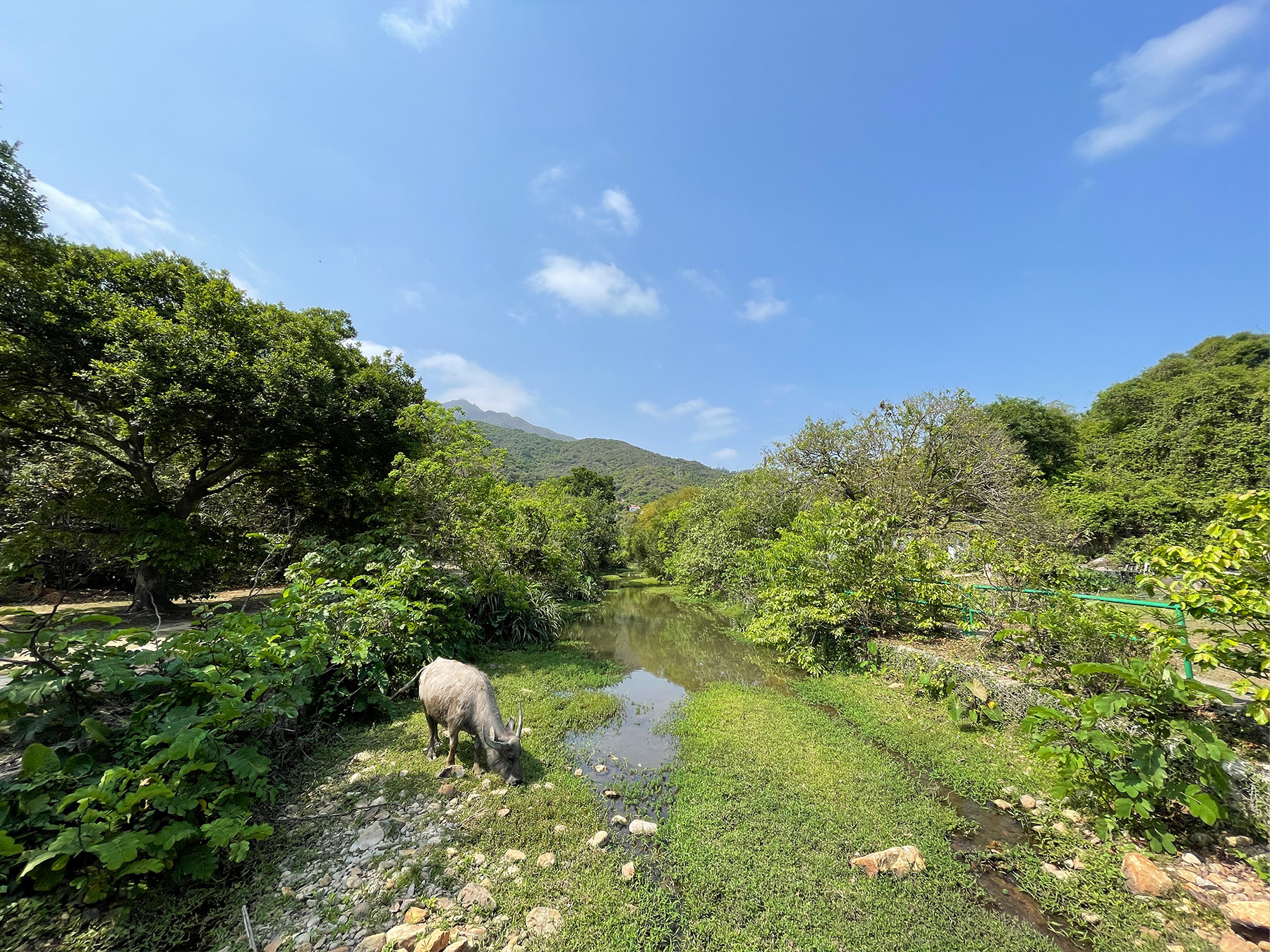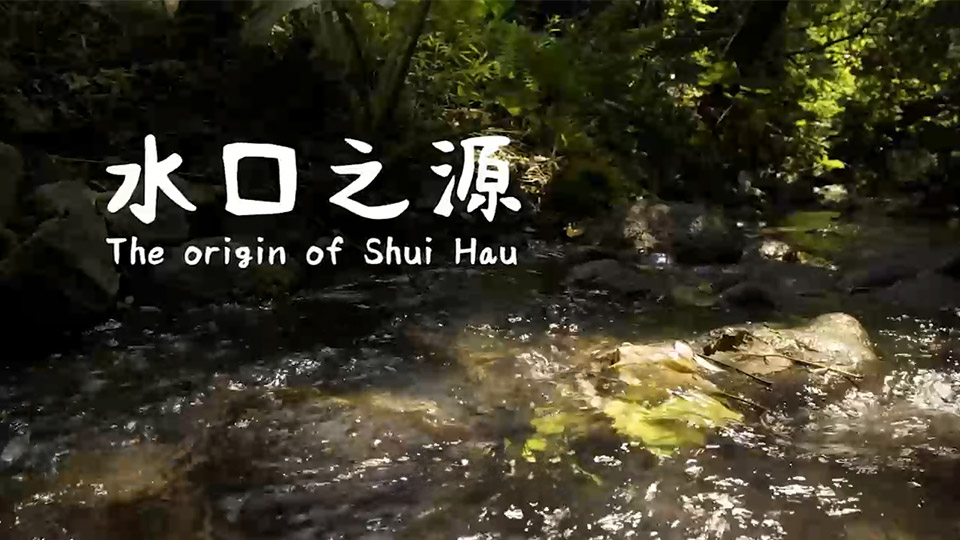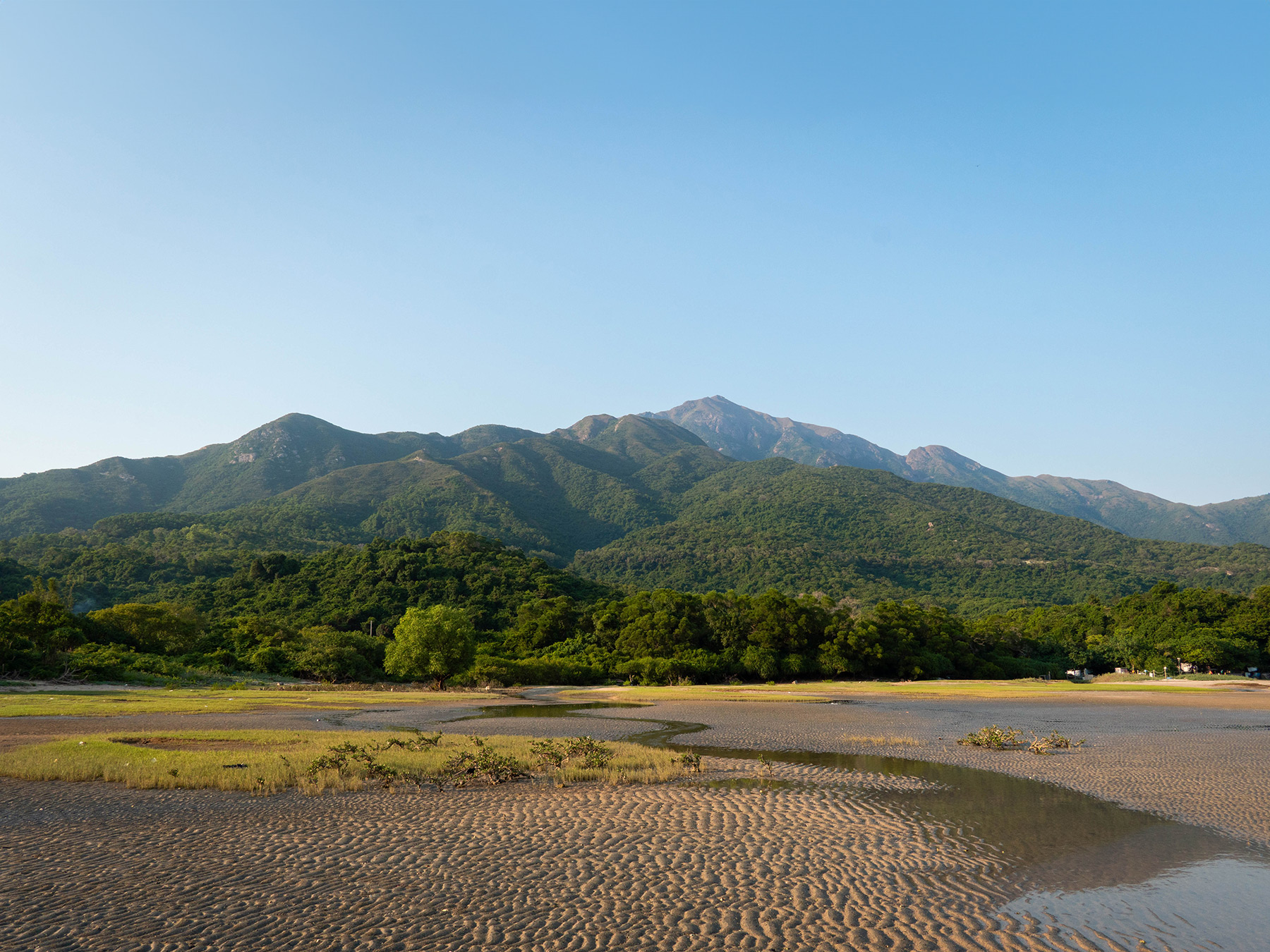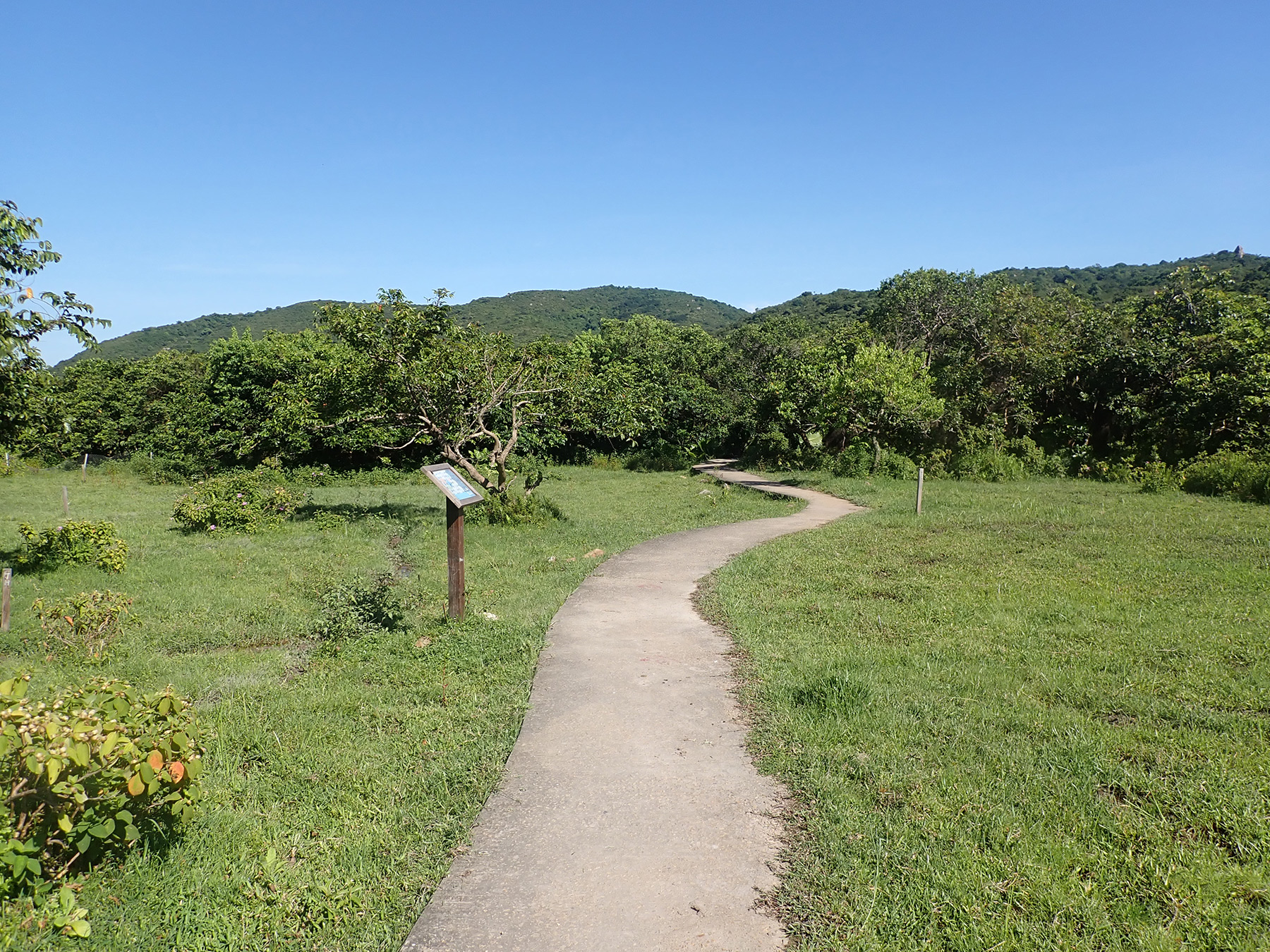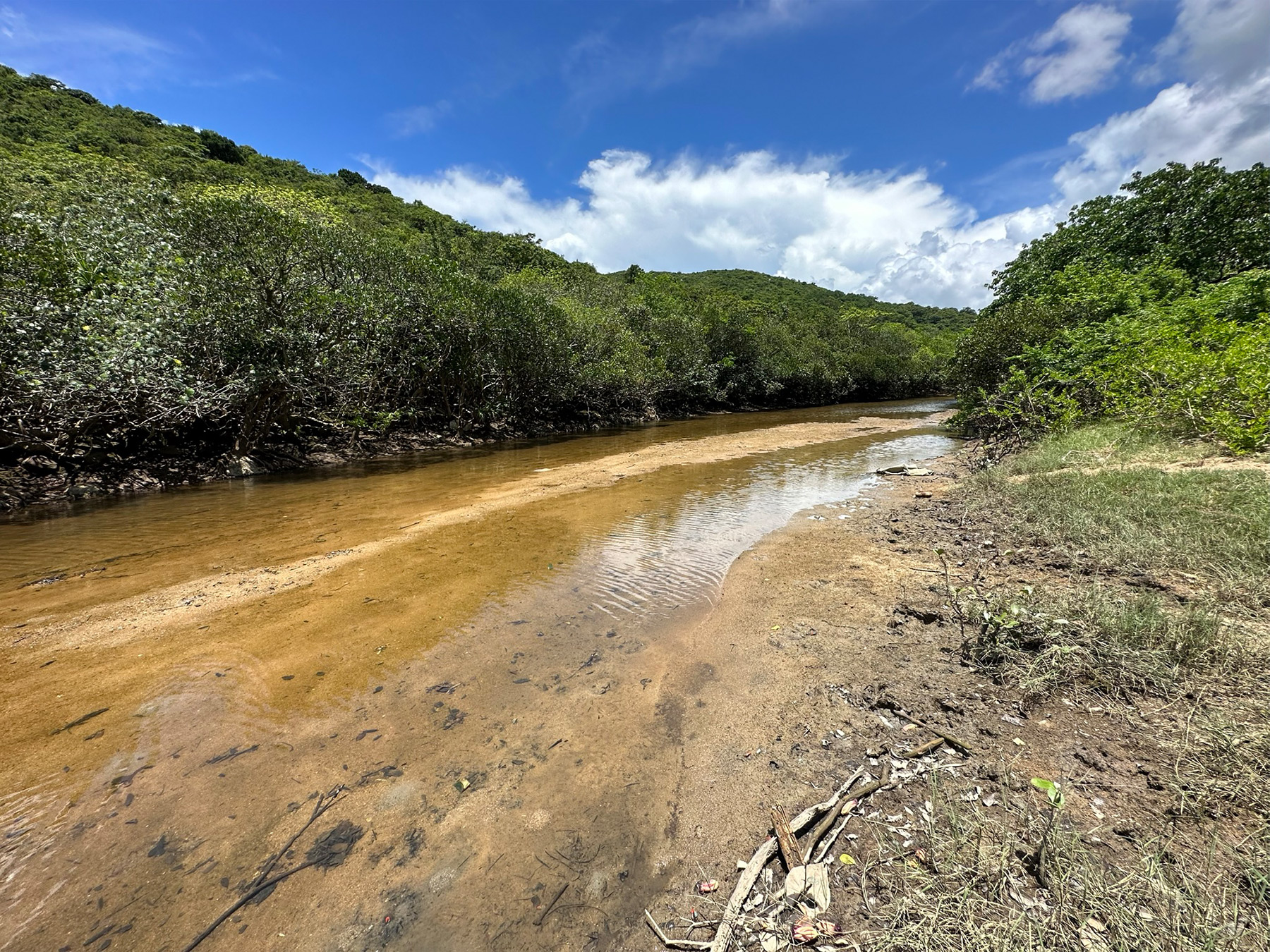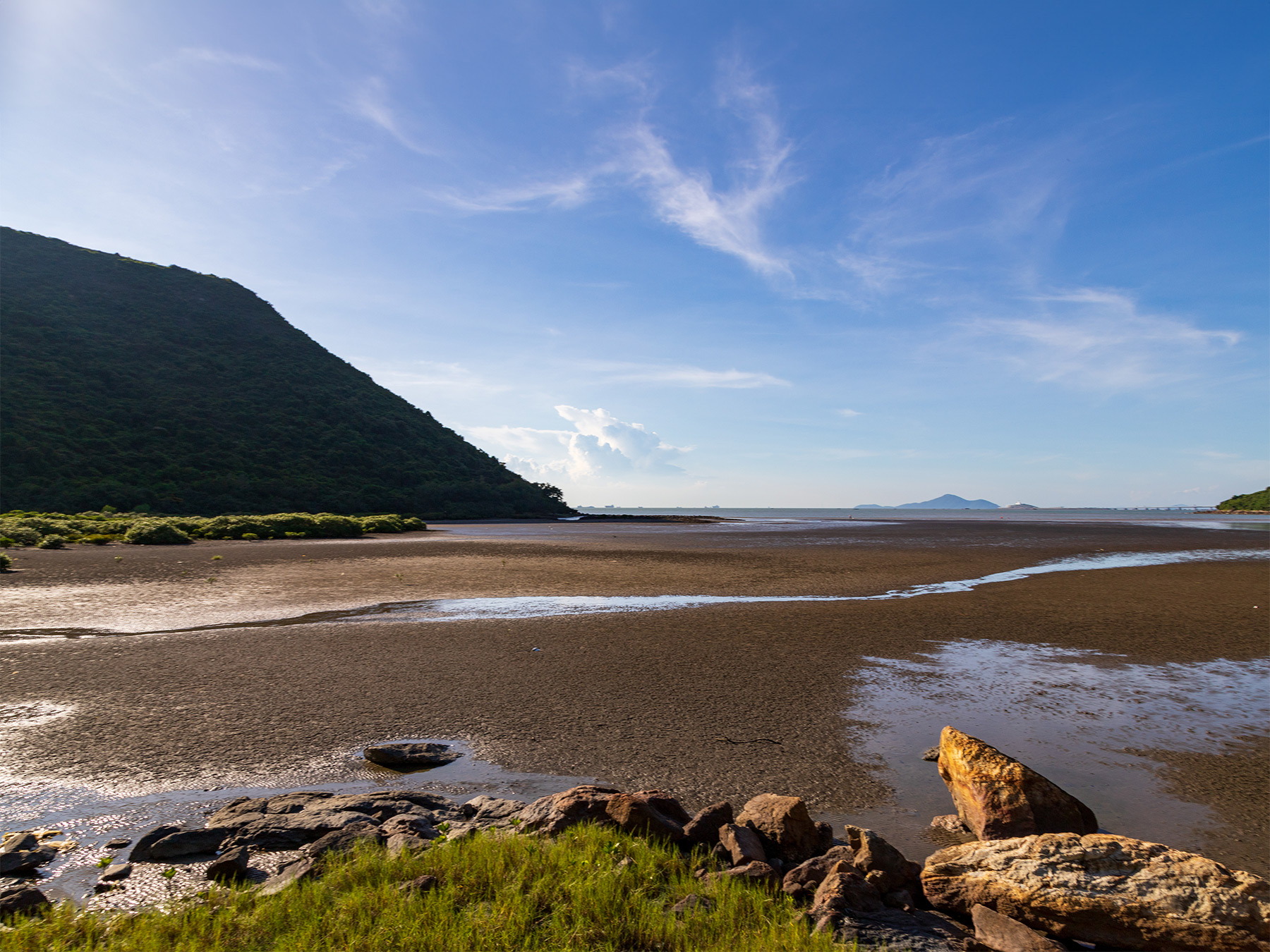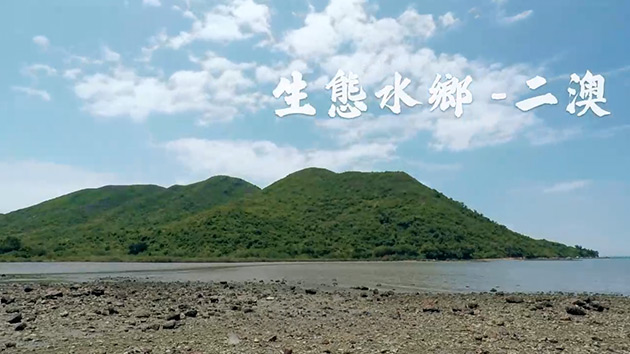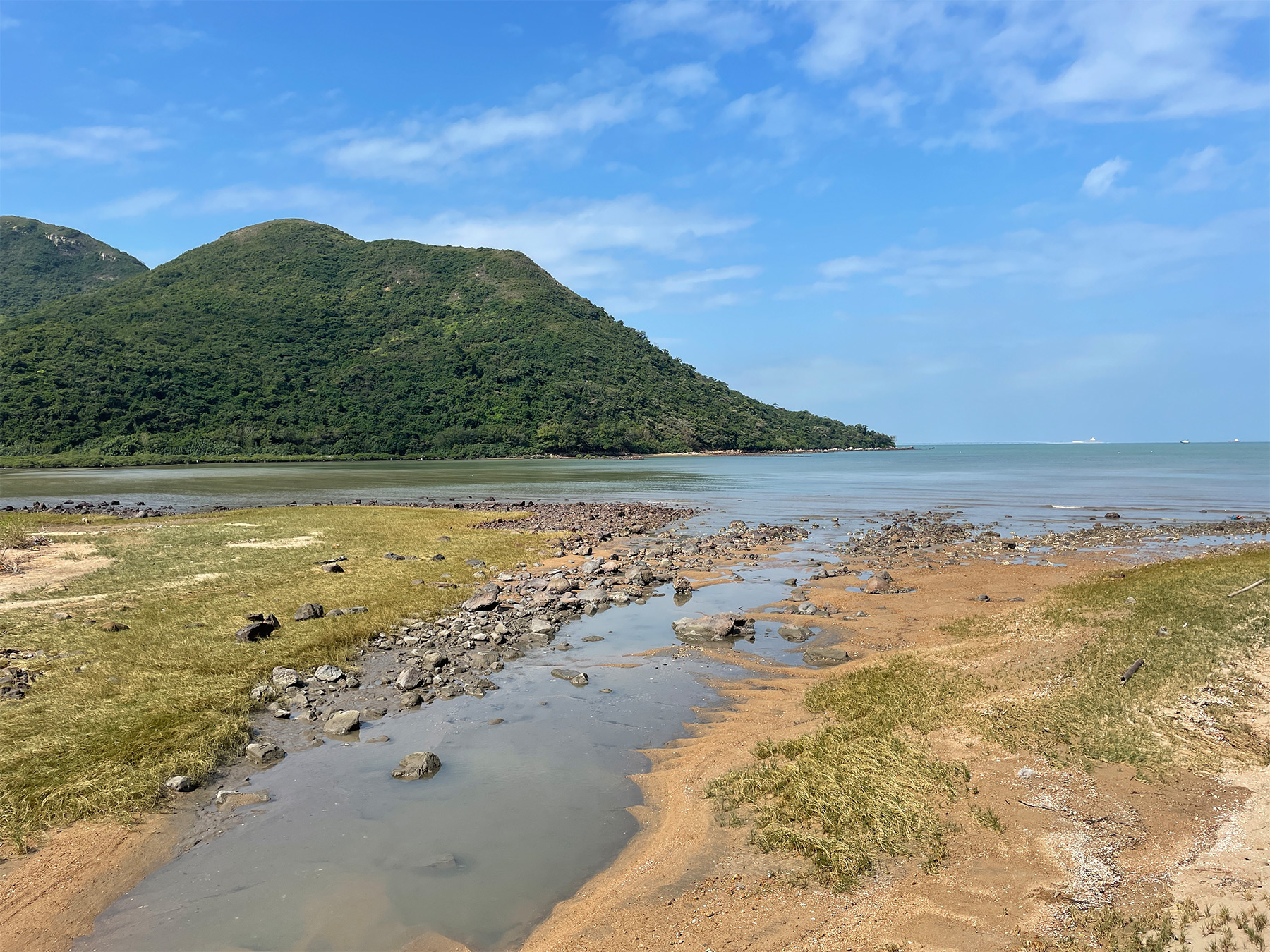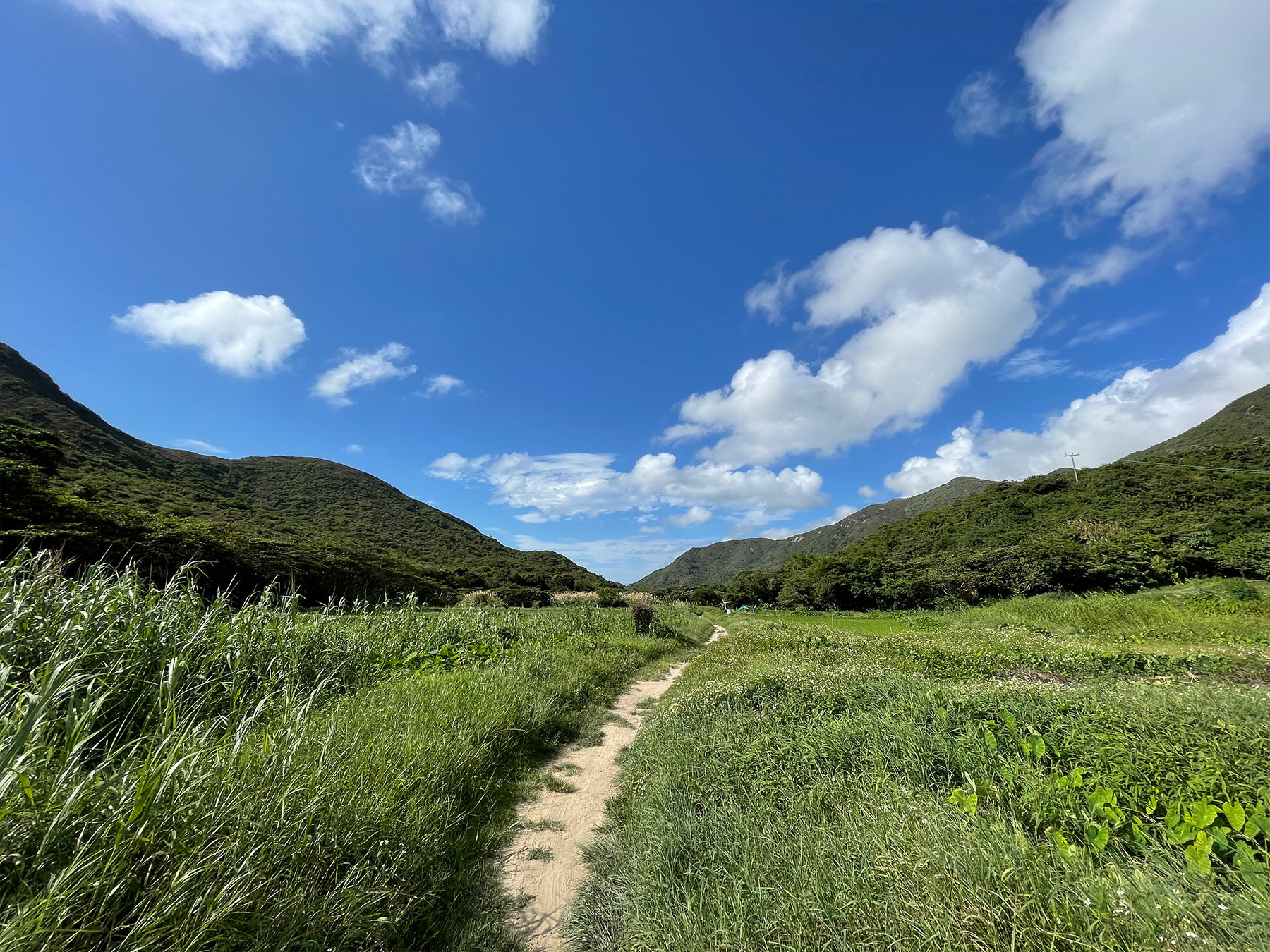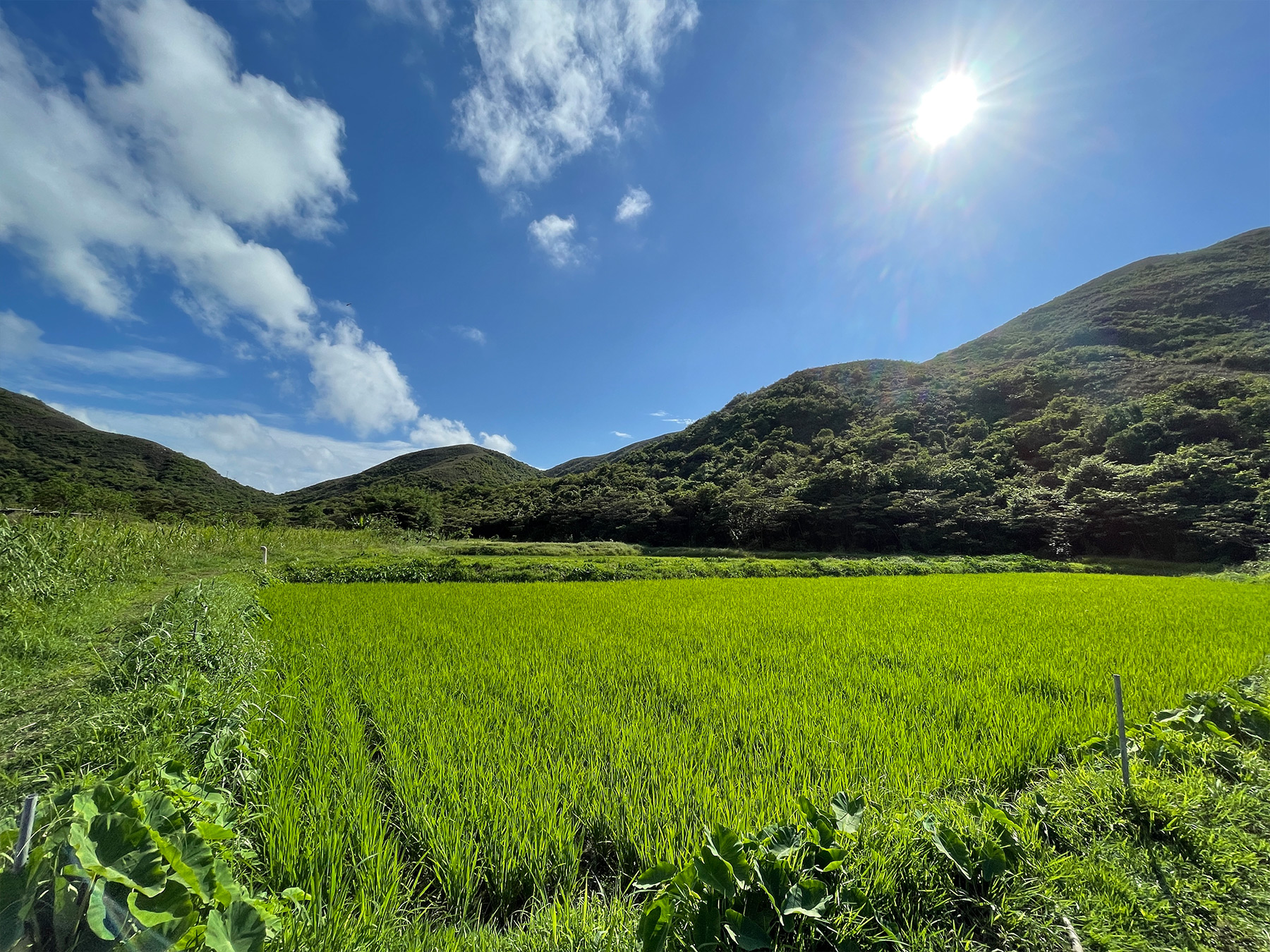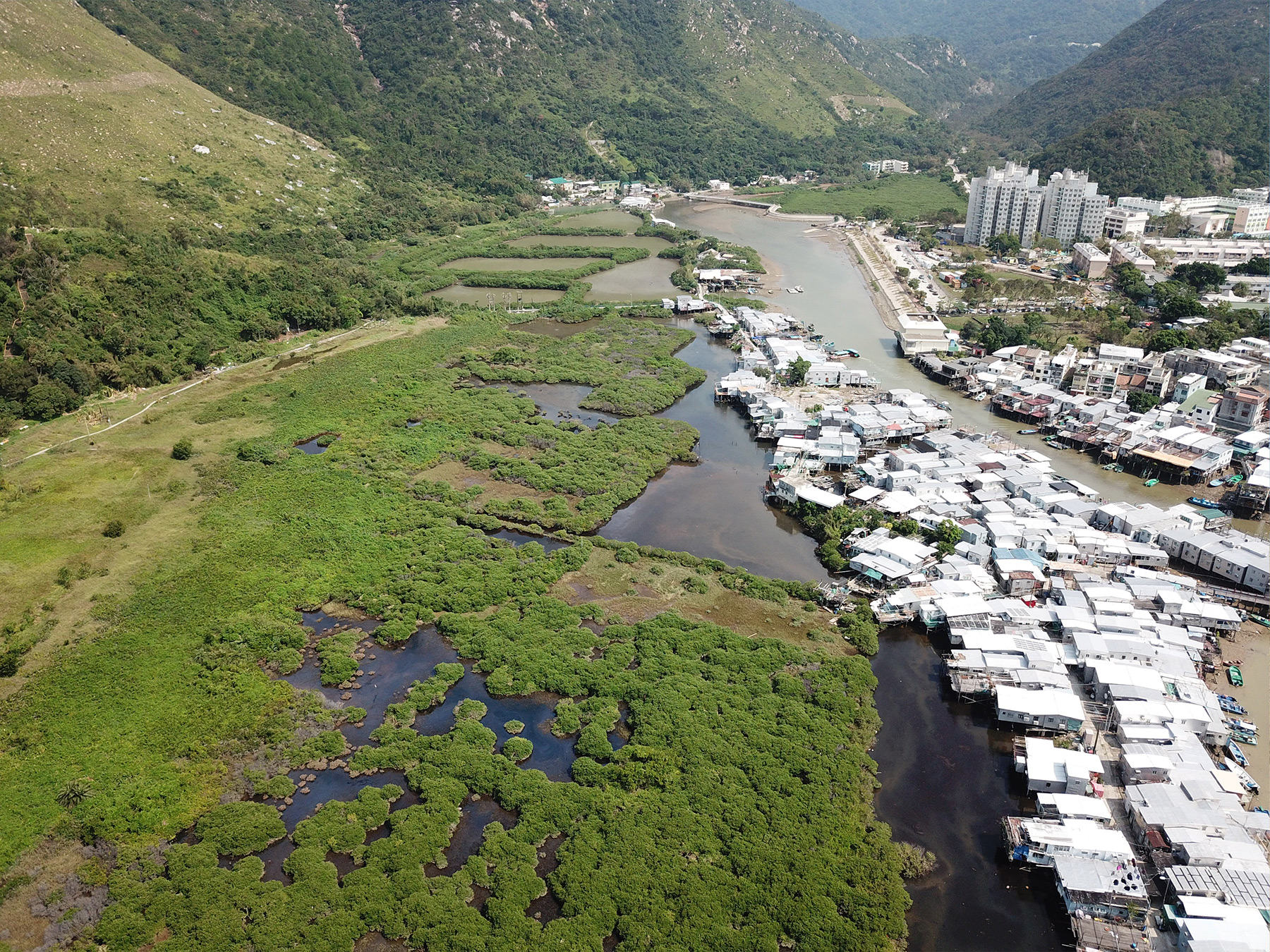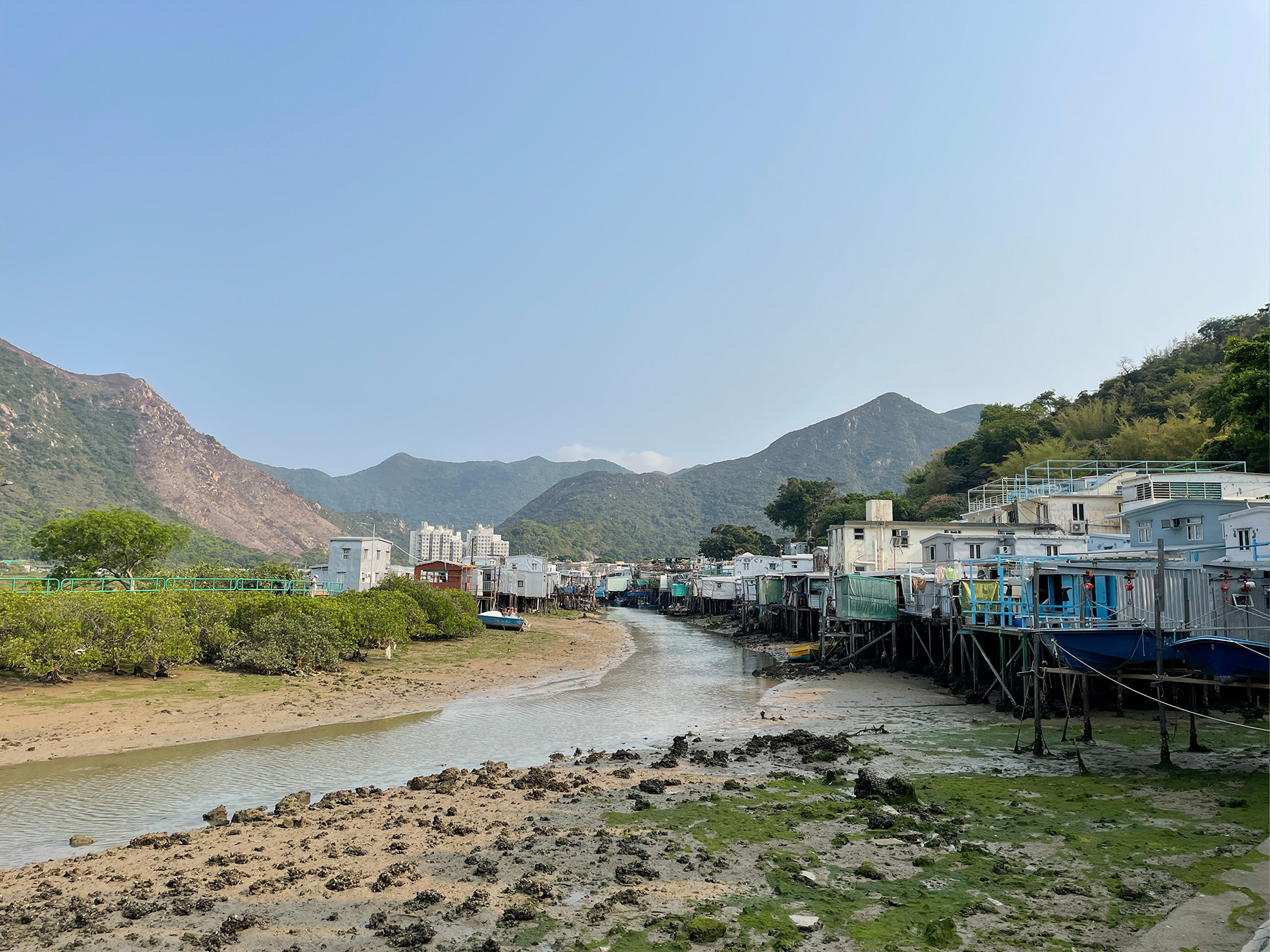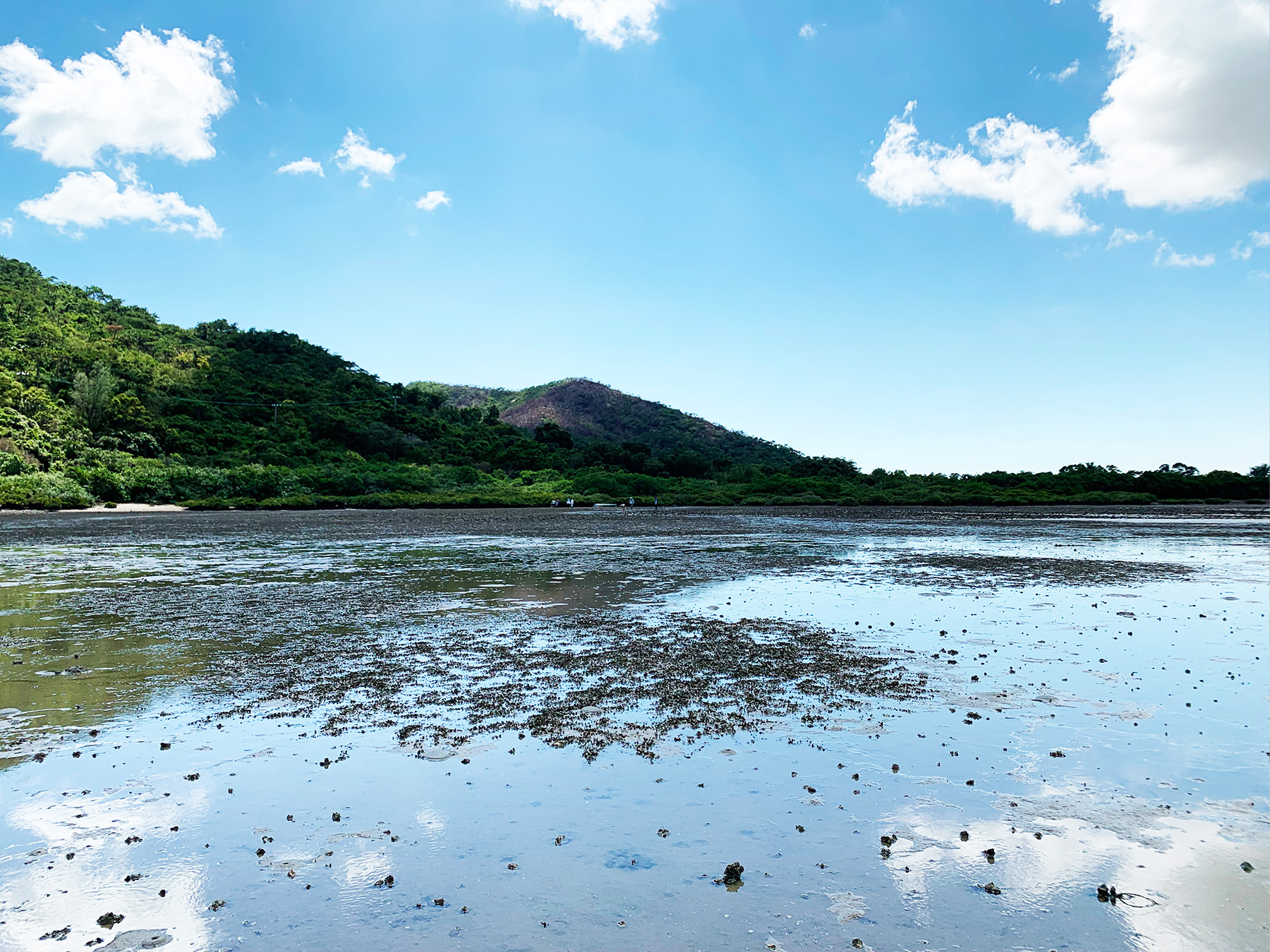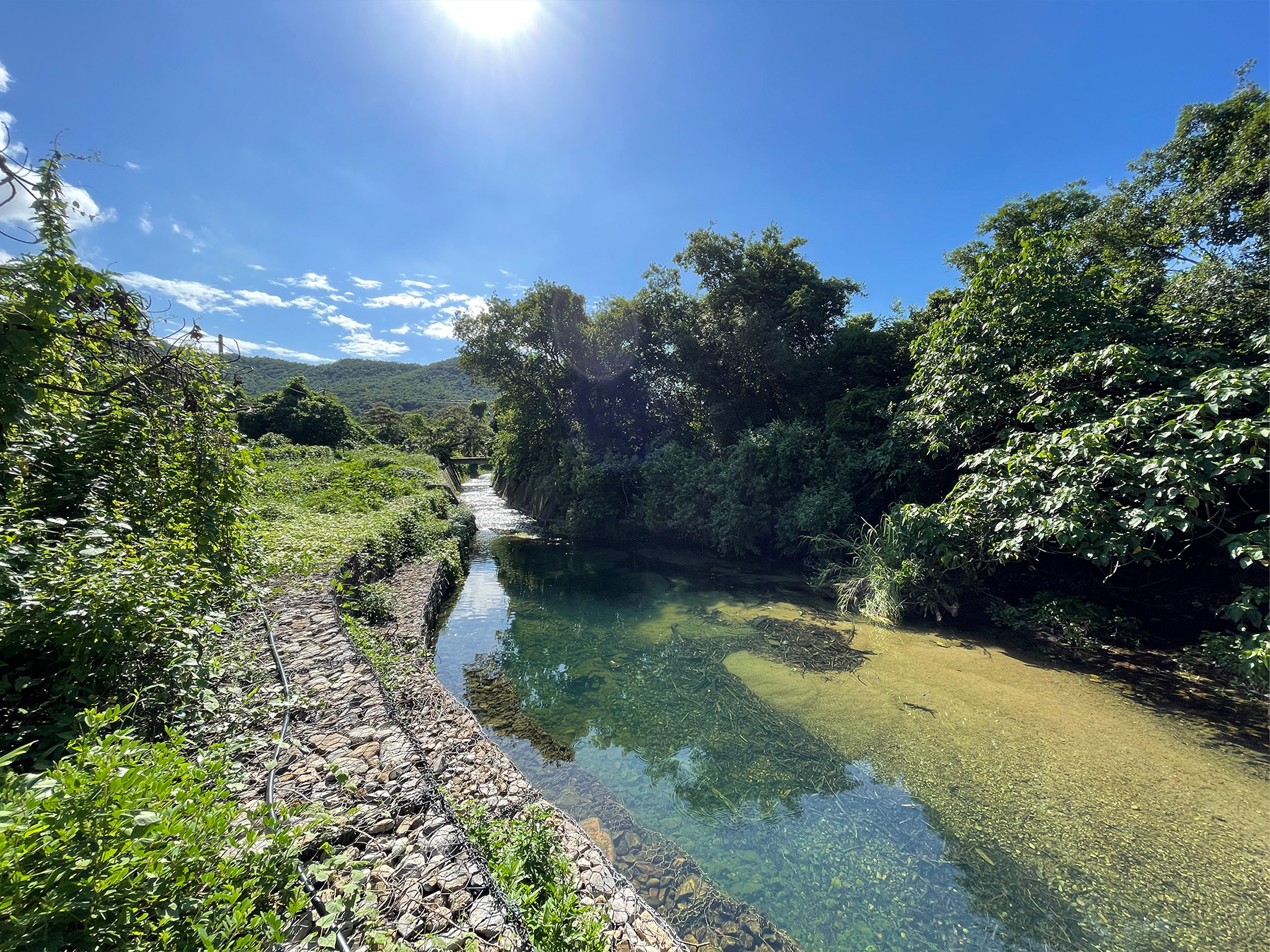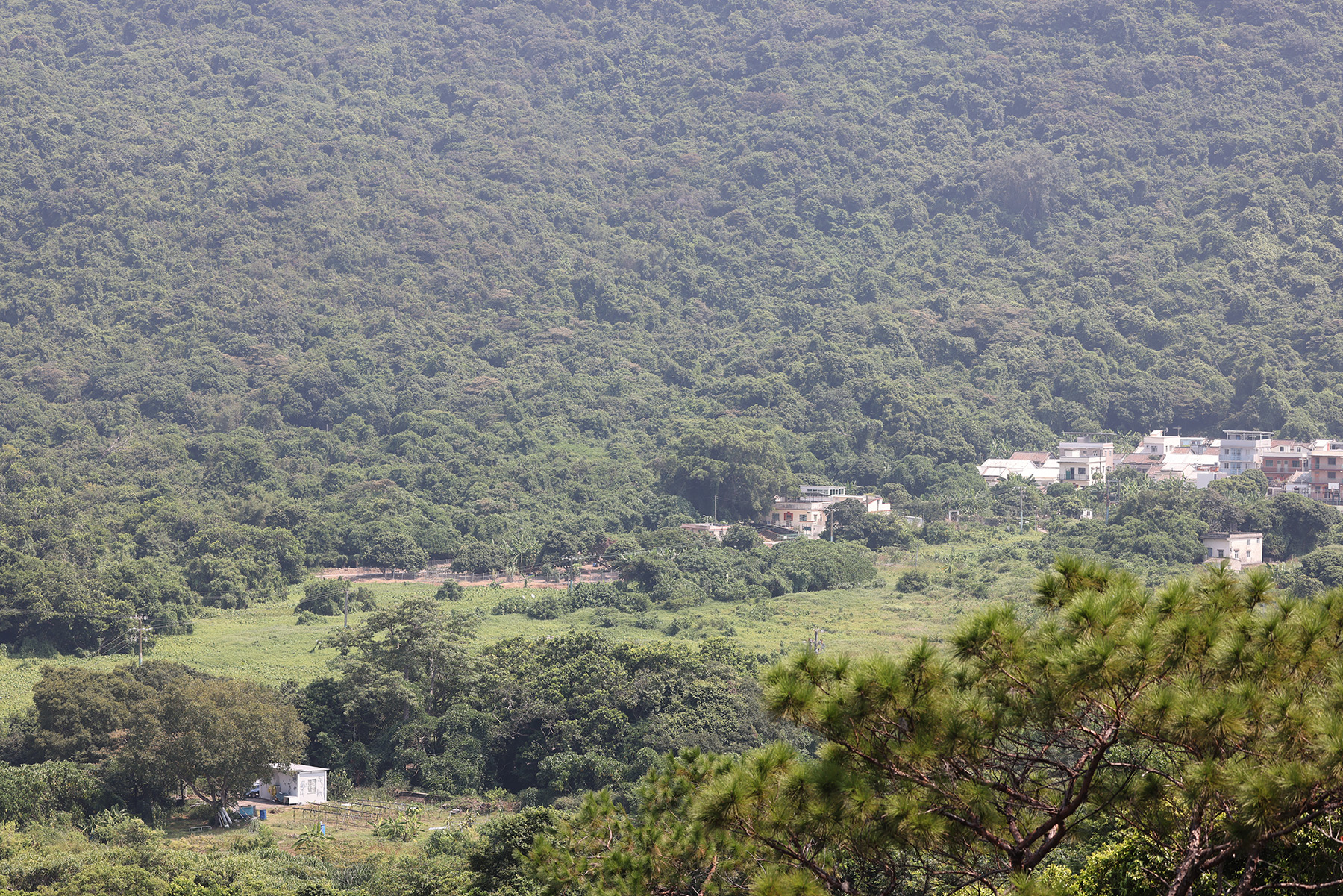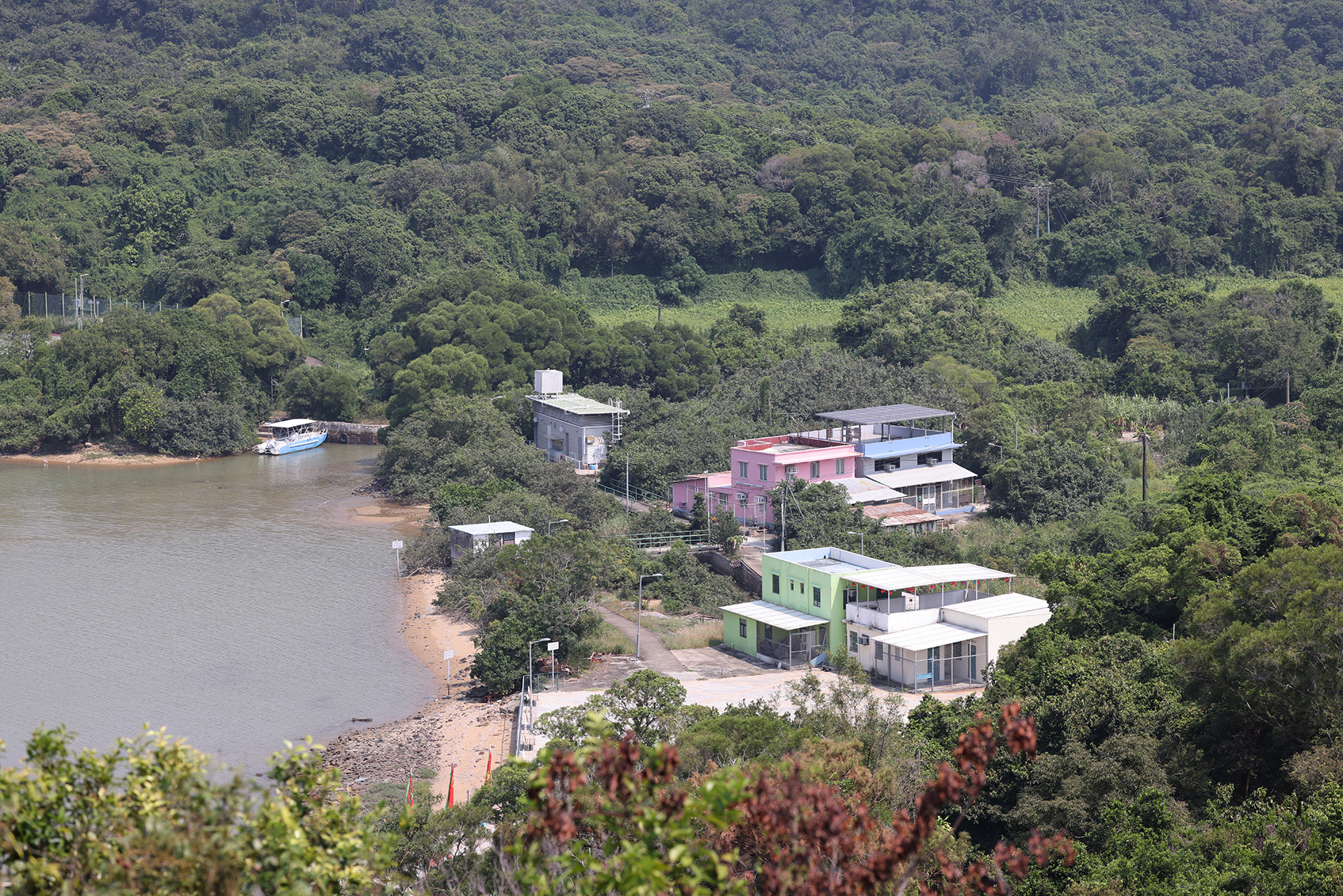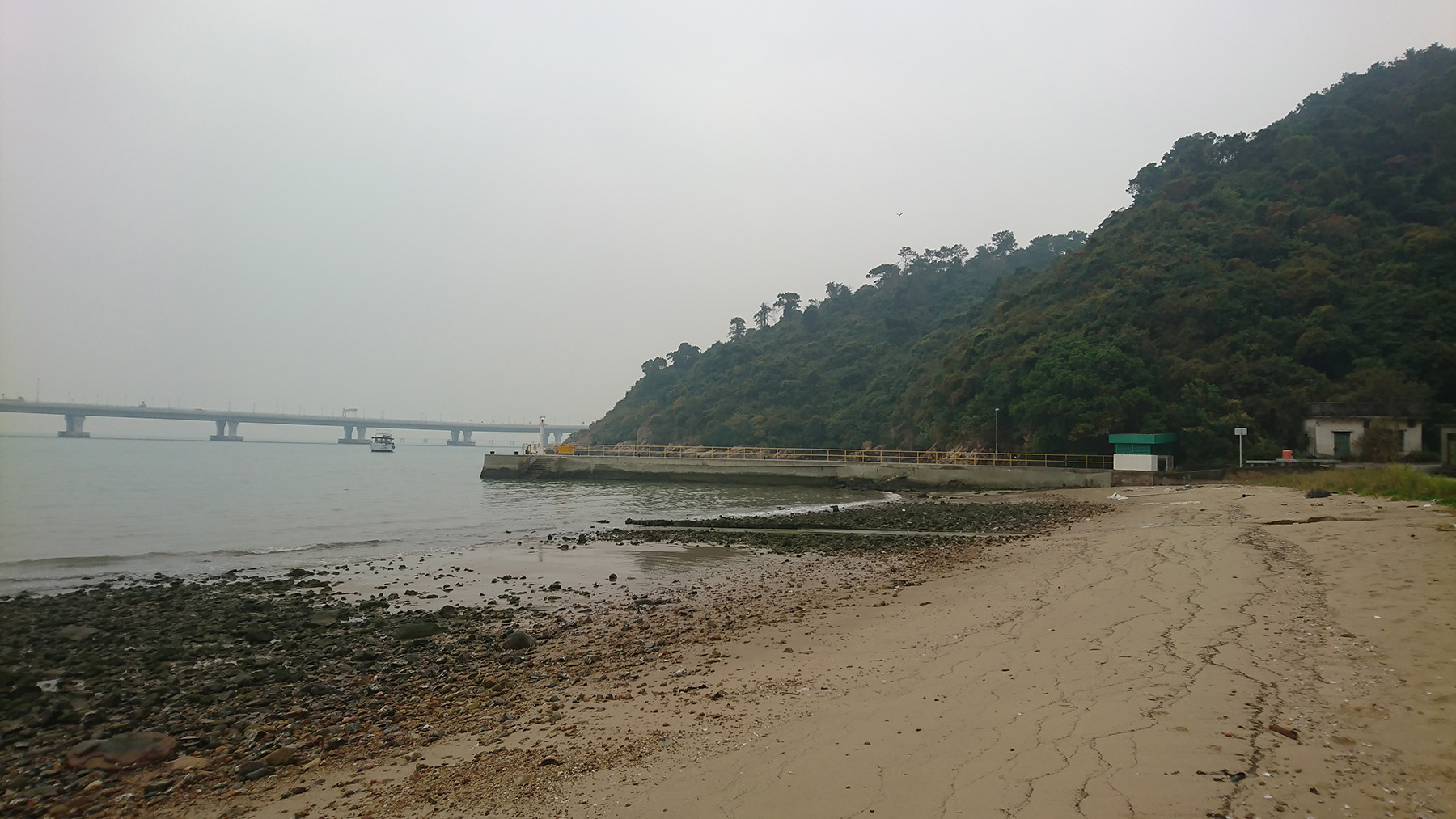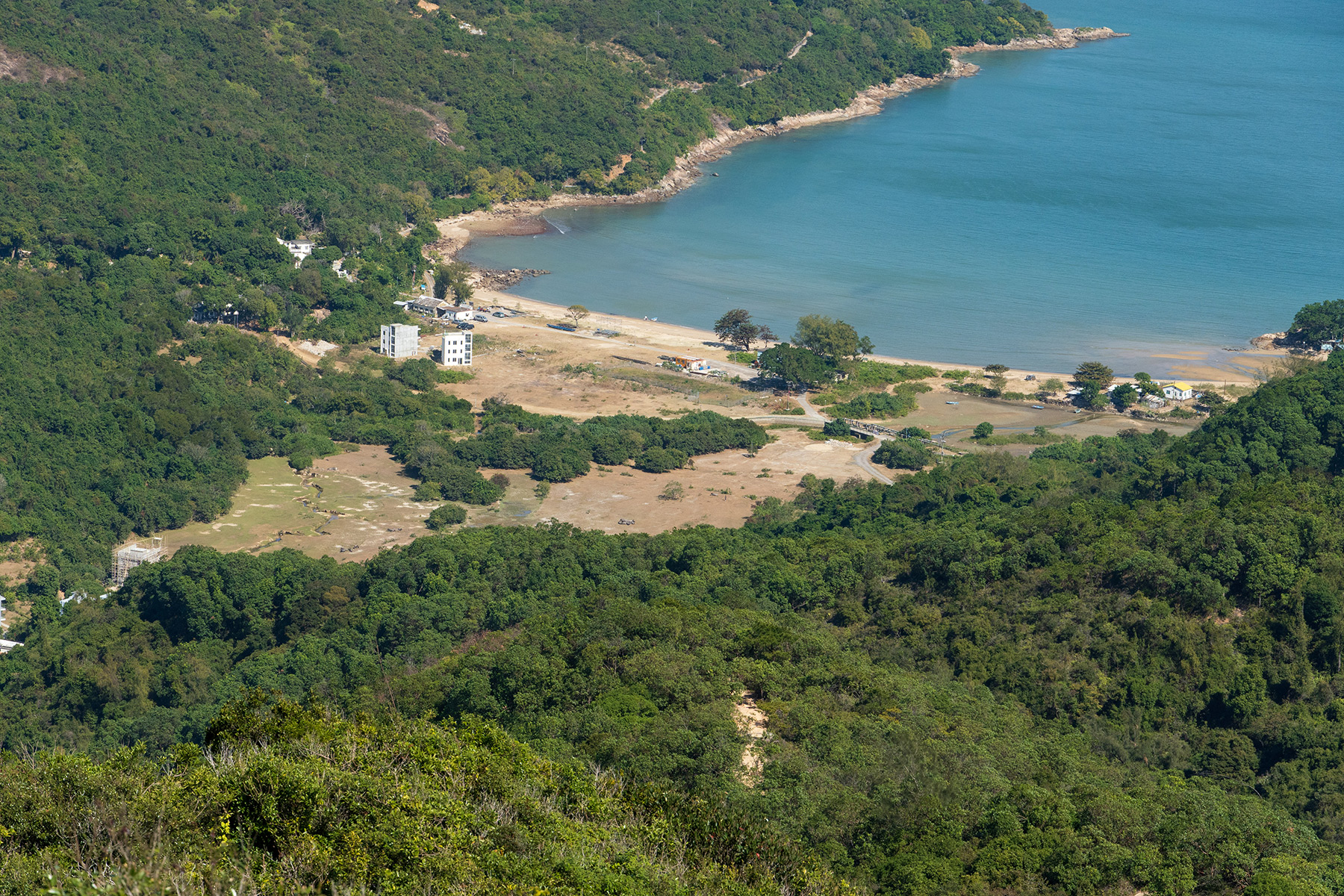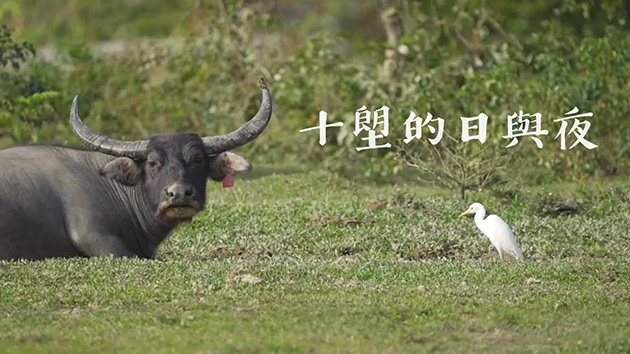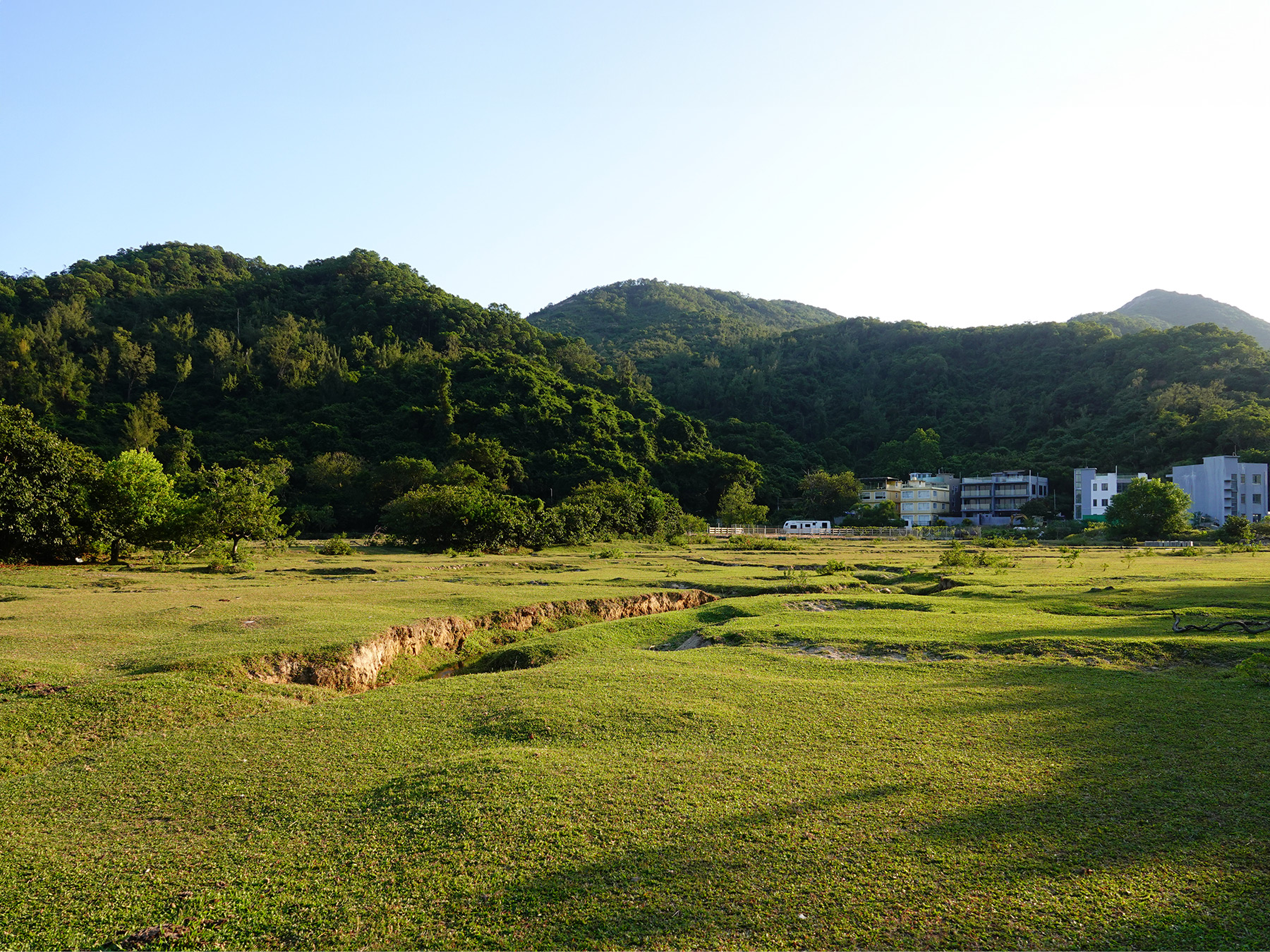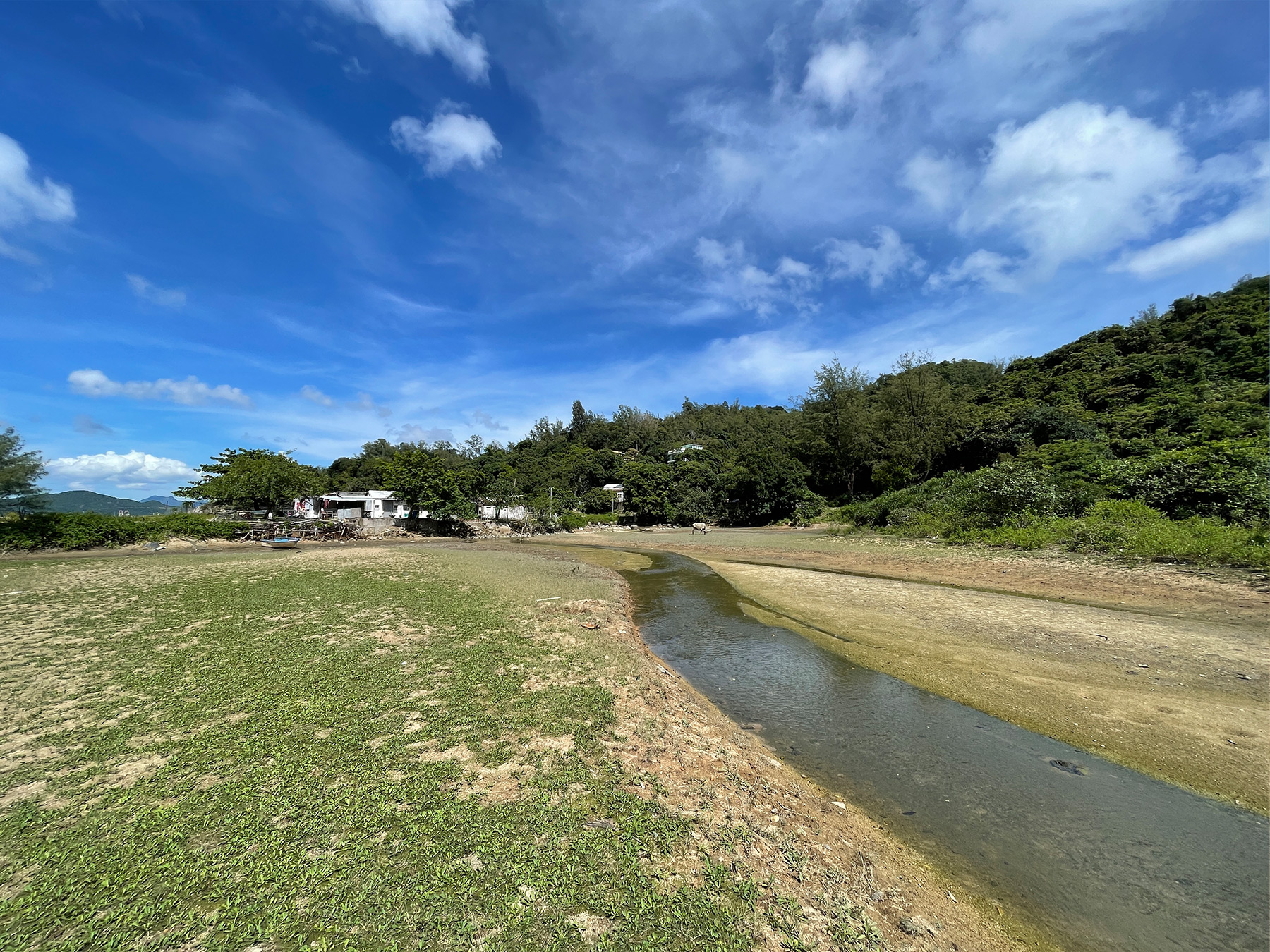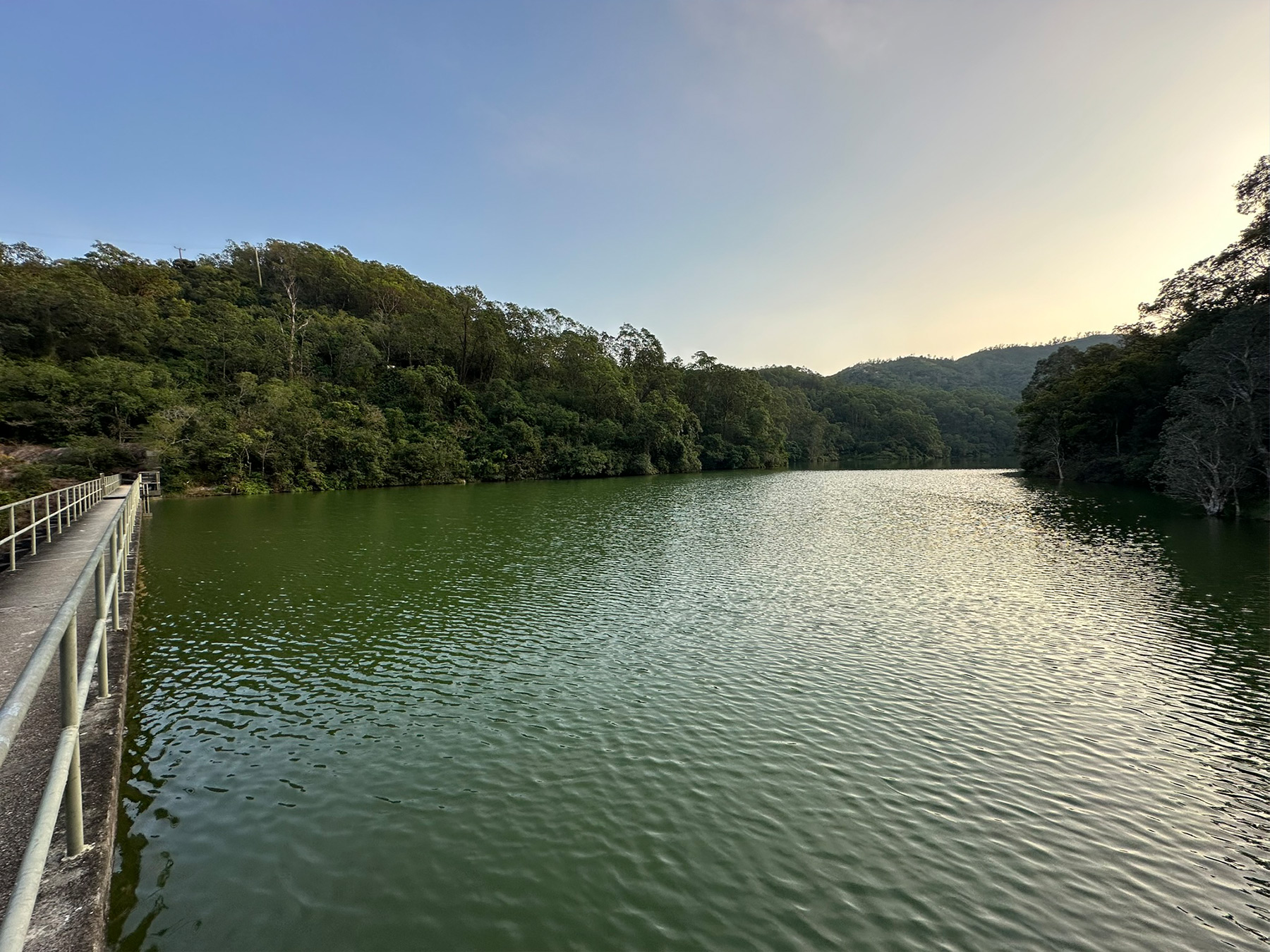Lantau's Nature
Amongst over 200 offshore islands in Hong Kong, Lantau Island is the largest island with a size of about 147 km2. The Island primarily consists of mountainous terrain, including the renowned Lantau Peak and the Sunset Peak; and has a long coastline which largely remains pristine. The unique landform on the Lantau Island and its surrounding waters provide diverse natural habitats, such as woodlands, shrublands, grasslands, streams, freshwater marshes etc. The upland area of the Island is one of the few places where remnants of the original forest cover of Hong Kong can still be found. With a wide range of natural habitats, the Island is rich in biodiversity and nurtures various rare and endemic plants and animals of conservation importance.
Sham Wat
Sham Wat encompasses the river valley between Nei Lak Shan and Cheung Shan, and the hillslope along the Tung O trail from the east of Sham Shek village to San Chau. The ecology of Sham Wat centres around the stream which is closely connected with adjacent habitats. They form a mosaic of habitats suitable for different wildlife, nurturing a high biodiversity.
Sham Wat Stream, also known as Ngong Sham Stream, runs from the upland in Ngong Ping to the estuary in Sham Wat Wan undisturbed. Given the naturalness and high integrity of the steam, it supports various freshwater and migratory fish and aquatic macroinvertebrates, including the nymph of Guangdong Hooktail, and serves as a potential nursery ground for estuarine fishes. The downstream is, therefore, designated as an Ecologically Important Stream (EIS).
The vegetation in the river valley is a mix of woodland and shrubland, and is the biodiversity hotspot in Sham Wat and a potential breeding ground for various terrestrial animals. A range and an abundance of animals and plants reside in the valley, with no lack of species of conservation importance, such as plants like Chinese Bushbeech and the orchids Dense-flowered Geodorum and Toothed Habenaria, birds like Eurasian Eagle-Owl and Fairy Pitta, mammals like Red Muntjac and Small-toothed Ferret Badger and herpetofauna like Romer's Tree Frog and Tokay Gecko.
Away from the river valley, the hillslope shrubland in San Chau also has a remarkable ecological value, as it harbours the largest known population of Champion's Rhododendron, and thus is designated as a Site of Special Scientific Interest (SSSI).
Sham Wat Wan is a sheltered bay with a relatively narrow entrance. The mudflat and mangrove is home to various intertidal organisms and a breeding and nursery ground for two species of horseshoe crabs. This is also a rare locality in Lantau grown with the seagrass Oval Halophila. Although the area occupied by the seagrass is relatively small, its potential ecological value is not to be overlooked.
Pui O
Pui O is situated in southern Lantau Island, bordering on Chi Ma Wan Peninsular to the east. Whilst most habitats in Pui O are not pristine, the wetland, stream and woodland areas have high biodiversity and interconnected, and thus of significant ecological value. These habitats support several rare and protected plant species, and are of particular conservation significance for a number of bird, amphibian and fish species. In addition, the site is most likely a pre-wintering or wintering site for migratory danaid butterflies in Hong Kong.
Pui O possesses both freshwater and brackish habitats. Pui O Stream flows through the hillside woodland and villages, and drains into Pui O Bay. It is connected to and support other wetlands in Pui O both hydrologically and ecologically, including freshwater marsh, mudflat and mangroves. It is rich in aquatic plants and animals. A large number of birds, including various ardeids like Great Egret, Intermediate Egret and Striated Heron, spend part or all of their life in this stream. As such, Pui O Stream is designated as an Ecologically Important Stream (EIS).
The most ecologically important areas in Pui O are the continuous freshwater marshes and seasonally wet grasslands in southern and central Pui O, where the marsh is permanently flooded and contains rich decaying organic matter. These wetland habitats are of ecological significance, particularly for amphibians, fish and odonates. In addition, several rare aquatic plants, such as Water Fern, Mosquito Fern and Water Shamrock, flourish in the wetlands. The wetlands also nurture a high diversity of macroinvertebrates, of which many are rare, resulting in high number of resident and visiting birds foraging there and thus making Pui O one of the most important sites for water birds on Lantau.
The woodlands in Pui O, albeit small in size, is strongly connected to the continuous woodland within Lantau South Country Park. They support several rare and protected plant species, and are equally important to several woodland bird and amphibian species of conservation value, the latter including a population of Romer's Tree Frog.
Shui Hau
Shui Hau is located in an inner bay in southern Lantau Island. The beauty of Shui Hau lies in its uninterrupted linkage and smooth landscape transition between the terrestrial and marine habitats. Terrestrial habitats, including wetland, stream and woodland, occur in a series behind the shoreline dotted with mangroves and are highly biodiverse. These habitats are ecologically linked to the unique sandflat, and together forming a rare and delicate ecosystem, nurturing a high ecological value.
The sheltered sandflat in Shui Hau is rather broad and provides habitats and food sources to support a rich intertidal community. This makes Shui Hau sandflat the only living example of a habitat of its kind in Hong Kong. Because of the abundant intertidal fauna, the sandflat serves as a feeding ground for an array of migratory and resident shorebirds and raptors, and an important stop-over point for passage migrant and winter visitor birds.
Birds of conservation importance recorded include Kentish Plover, Ruddy Turnstone, Peregrine Falcon and White-bellied Sea Eagle. The sandflat is also one of the major nursey ground for horseshoe crabs on Lantau Island.
Shui Hau Stream provides vital freshwater input to the lowland marsh and further down to the sandflat. The presence of several catadromous species, such as Rock Flagtail and Bellybarred Pipefish, demonstrates the important ecological function of Shui Hau Stream as an essential movement corridor for these fish species.
The marsh in Shui Hau is home to several rare species or species of conservation importance, for examples plants like Water Fern and Ceylon Sphenoclea. In terms of wildlife, the habitat is of ecological significance to many amphibians and odonates as breeding and nursery ground, such as Chinese Bullfrog, Three-striped Grass Frog and Scarlet Basker. Some birds of conservation importance can also be found forging there.
The woodland of Shui Hau is strongly connected to the continuous woodland within Lantau South Country Park. As a mature and floristically diverse habitat, it supports a high diversity of butterflies, as well as several rare and protected woodland bird species, such as Collared Scops Owl and Black-naped Oriole, and herpetofauna of conservation importance, such as Romer's Tree Frog.
Yi O
Located at the western end of Lantau, south of Tai O, Yi O is situated inland in a sheltered bay embraced by Tai Hom Sham and Nga Ying Shan to the east and Kai Kung Shan to the west. The primary landscape and ecological feature is a lowland stream that flows from south to north through the vegetated habitats around Yi O village to the mudflat. The integration of natural lowland habitats is uncommon in Hong Kong, and thus Yi O possesses distinctive ecological resources.
Yi O is home to several watercourses; apart from the lowland stream along Yi O village, there are Shui Lo Cho Stream and Nga Ying West Stream on the eastern side. These rather undisturbed watercourses sustain a diverse community of aquatic animals, including freshwater and estuarine fish such as the rare Metzia lineata and Rice Fish with conservation concern.
Most lowland vegetated habitats in Yi O are woodlands and farmlands which are ecologically linked and contribute to the diversity of birds, butterfly and herpetofauna. Species of conservation importance include the butterflies Forget-me-not and Common Awl, and Tokay Gecko and Romer's Tree Frog. Part of the farmland in Yi O village was re-established recently for cultivation of crops (such as rice) and orchard. Although slightly fragmented, this habitat particularly supports some migratory birds. During the autumn harvest, the paddy fields attract a community of seed-eating birds, including the rare Yellow-breasted Bunting, which relies on the food sources from the paddies to continue their migration.
The mudflat in Yi O has a mangrove stand, which together they nurture an array of intertidal animals, including two species of horseshoe crabs. In particular, the abundance of Chinese Horseshoe Crab recorded was among the highest on Lantau. Moreover, a large aggregate of Soldier Crabs feeding on the mudflat surface is a remarkable sighting from Yi O.
Tai O
Tai O is a village in the western side of Lantau Island, surrounded by serene water and woodlands in the mountainous Lantau North Country Park. The peripheral areas of the village comprise mainly ecologically valuable wetland habitats, including mangrove, freshwater marsh, pond, reedbed and stream. They nurture a wide variety of animals and plants, especially wetland-dependent birds and migratory birds.
Mangrove stands can be found in several locations in Tai O, including Po Chue Tam, Yim Tin, around Yim Tin Playground and near Tai O estuary. The two continuous and relatively larger mangrove patches in Po Chue Tam and Yim Tin frequently hosts a higher abundance of water birds and wetland-associated birds. Among which Black-crowned Night Heron, Chinese Pond Heron, Grey Heron, Intermediate Egret, Little Egret, Striated Heron, White-shouldered Starling and White-throated Kingfisher are of conservation importance. To the north of the mangroves in Yim Tin, there is a freshwater marsh with a low level of disturbance. It is ecologically linked with adjacent mangrove and pond habitats, forming a diverse wetland habitat to support a moderate biodiversity. The woodlands near the wetlands in Tai O are also known to serve as a night roost for migratory ardeids.
Located north of Leung Uk village, the sizable area of inundated bed of reedgrass, commonly known as Tai O Reedbed, is one of the largest reedbeds in Hong Kong. Such scale of reedbed habitat is uncommon in Hong Kong. This reedbed is connected with the mangroves and ponds around Yim Tin Playground and form a large wetland. A damselfly of conservation importance, the Four-spot Midget, was recorded in the reedbed.
San Tau
San Tau is located in the northeastern foothills of Nei Lak Shan, which is along the passage of Tung O Trail. Its eastern side faces Tung Chung Bay, whereas the western side harbours hillside forest including a Fung Shui Wood behind San Tau village. San Tau encompasses diverse habitats, including stream, woodland, farmland, mudflat and mangrove stand, providing continuous and undisturbed habitats for wildlife and supporting a high diversity and abundance of animals. The ecological value of San Tau is impressive.
San Tau Stream flows from the upland forested area to the lowlands, bisecting the village, extending all the way to the mangroves and mudflat. Although the stream is partially channelised downstream, it is still home to several aquatic animals of conservation importance, such as Rice Fish and the nymph of Guangdong Hooktail. The stream is ecologically linked with the nearby vegetated habitats and is the key to the rich and diverse fauna in San Tau, with records of precious animals including Brown Fish Owl and Romer's Tree Frog.
The lowland vegetated habitats of San Tau, including farmlands, shrublands and woodlands, form a habitat complex, grown with an array of butterfly nectary and host plants. The habitat complex supports a high diversity of butterflies, including the rare White Dragontail. The habitat is also home to herpetofauna of conservation importance like Tokay Gecko and Romer's Tree Frog.
The mudflat in San Tau harbours the largest patch of seagrass bed on Lantau, grown with two species of seagrass, namely Oval Halophila and Dwarf Eel Grass, which is uncommon in Hong Kong. Together with the adjacent mangrove stand, they provide a shelter and feeding ground to various intertidal animals, and nurture two species of horseshoe crabs. As such, part of the mudflat area with seagrass bed is designated as a Site of Special Scientific Interest (SSSI). Apart from intertidal animals, the mudflat also serves as a feeding ground for ardeids including Black-crowned Night Heron, Great Egret and Little Egret.
Hau Hok Wan to San Shek Wan
Hau Hok Wan to San Shek Wan located on the northwestern side of Nei Lak Shan, covering three bays namely Hau Hok Wan, Sha Lo Wan and San Shek Wan. The area around Hau Hok Wan along the Tung O trail is mainly hillslope shrubland, whereas Sha Lo Wan and San Shek Wan areas are mainly hillside woodlands, comprised of plantations and Fung Shui Wood behind villages. The vegetation overall is undergoing ecological succession to become a maturing woodland.
Two villages established at the foot of hills, they are the Sha Lo Wan village and Sham Shek village. A spread of lowland in front of the villages used to be farmland, but are largely abandoned. The vegetated habitats from Hau Hok Wan to Sha Lo Wan, including farmlands, shrublands and woodlands, are now considered a butterfly hotspot, grown with various butterfly host plants and with record of a high diversity and abundance of butterflies including Common Birdwing, Common Albatross, Indian Awl King and Falcate Oak Blue, all of conservation importance. Apart from butterflies, the habitat is also home to other species of conservation importance such as Chinese Bushbeech and Malayan Night Heron.
Several streams flow through the village farmlands to the shores. The shores in Hau Hok Wan and Sha Lo Wan are mudflats, whereas it is a boulder shore in San Shek Wan. The mudflats in Hau Hok Wan and Sha Lo Wan serve as a nursery ground for horseshoe crab, in particular two species of horseshoe crabs in Sha Lo Wan, and thus have a certain ecological value. As most of the horseshoe crabs recorded Sha Lo Wan were in juvenile stage, the situation indicates the importance of this habitat for their early development.
Shap Long
Shap Long comprises two major areas, which are the lowland valley on the western side near Shap Long village and the narrow river valley downstream of Shap Long Irrigation Reservoir on the eastern side. Both areas are surrounded by woodlands abutting Lantau South Country Park. Although the habitat diversity of Shap Long is relatively low where it mainly comprises grasslands, woodlands and streams, Shap Long is still home to many species.
The lowland area in front of Shap Long village were farmlands but since abandonment have become a grassland under the maintenance of Domestic Water Buffaloes. Amid the grassland, there is a lowland stream flowing through and irrigating the grassland. During the wet season, Domestic Water Buffaloes create wallows in the wet grassland. These wallows facilitate the breeding of an abundance of aquatic insects and amphibians such as Romer's Tree Frog, and also serve as foraging grounds for birds such as Eastern Cattle Egret and Black-winged Stilt. The downstream section of this lowland stream also serves as a nursery ground for an array of estuarine and marine fish such as Mangrove Snapper, Blackhead Seabream, Yellowfin Seabream and Dark-margined Flagtail, indicating the importance of the river mouth habitat in Shap Long.
The woodlands in Shap Long are partially derived from plantations. They overall have quite high biodiversity, with records of several rare species of conservation concern including plants like Chinese Bushbeech and Rhodoleia, and birds like Brown Fish Owl, Fairy Pitta and Malayan Night Heron. The woodland in the vicinity of Shap Long Irrigation Reservoir was also found to be an occasional winter roosting site for ardeids. A large number of Black-crowned Night Heron had been recorded in the roost. The woodland stream downstream of Shap Long Irrigation Reservoir also hosts Short-legged Toad, an amphibian of conservation importance.
